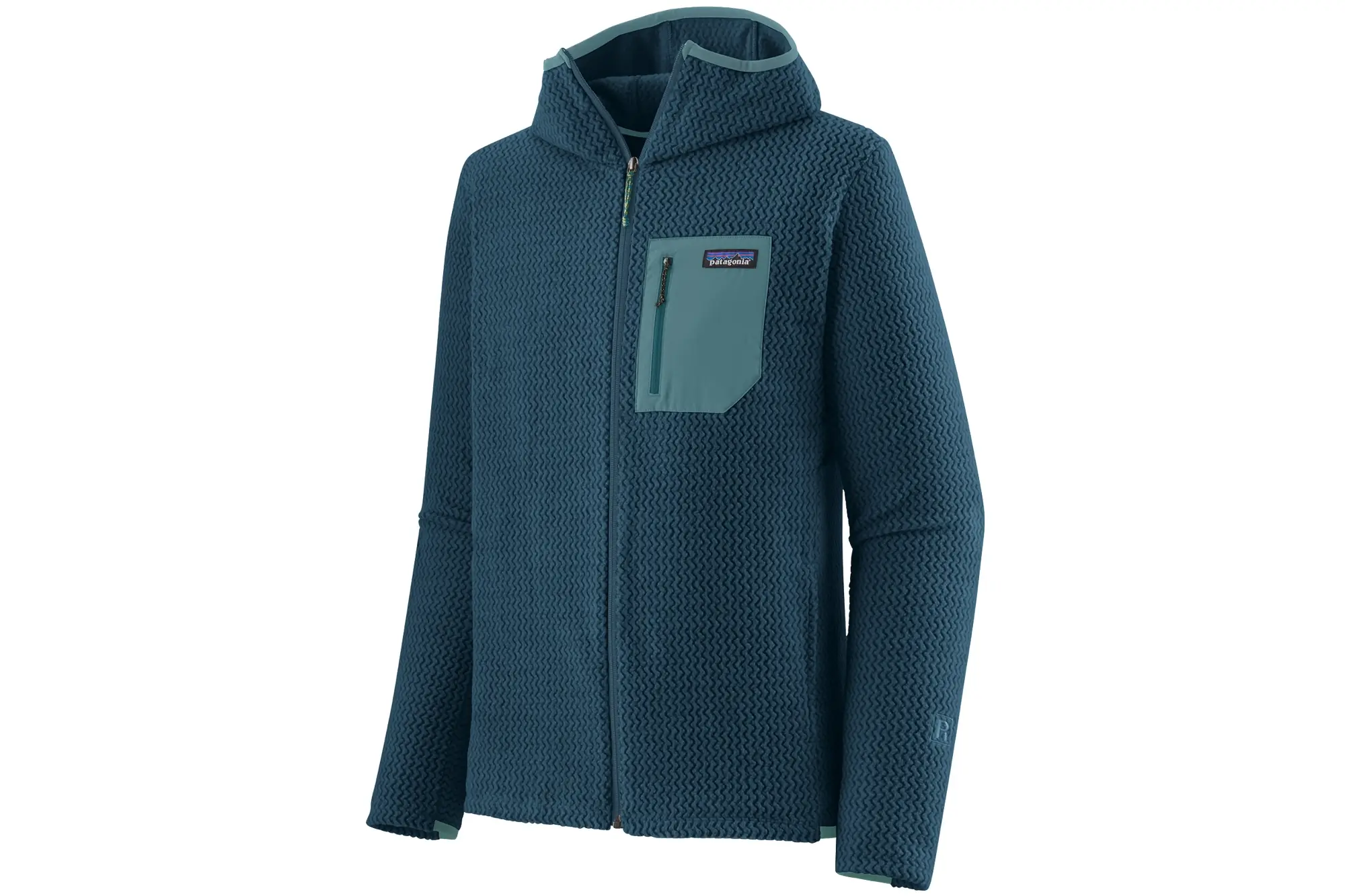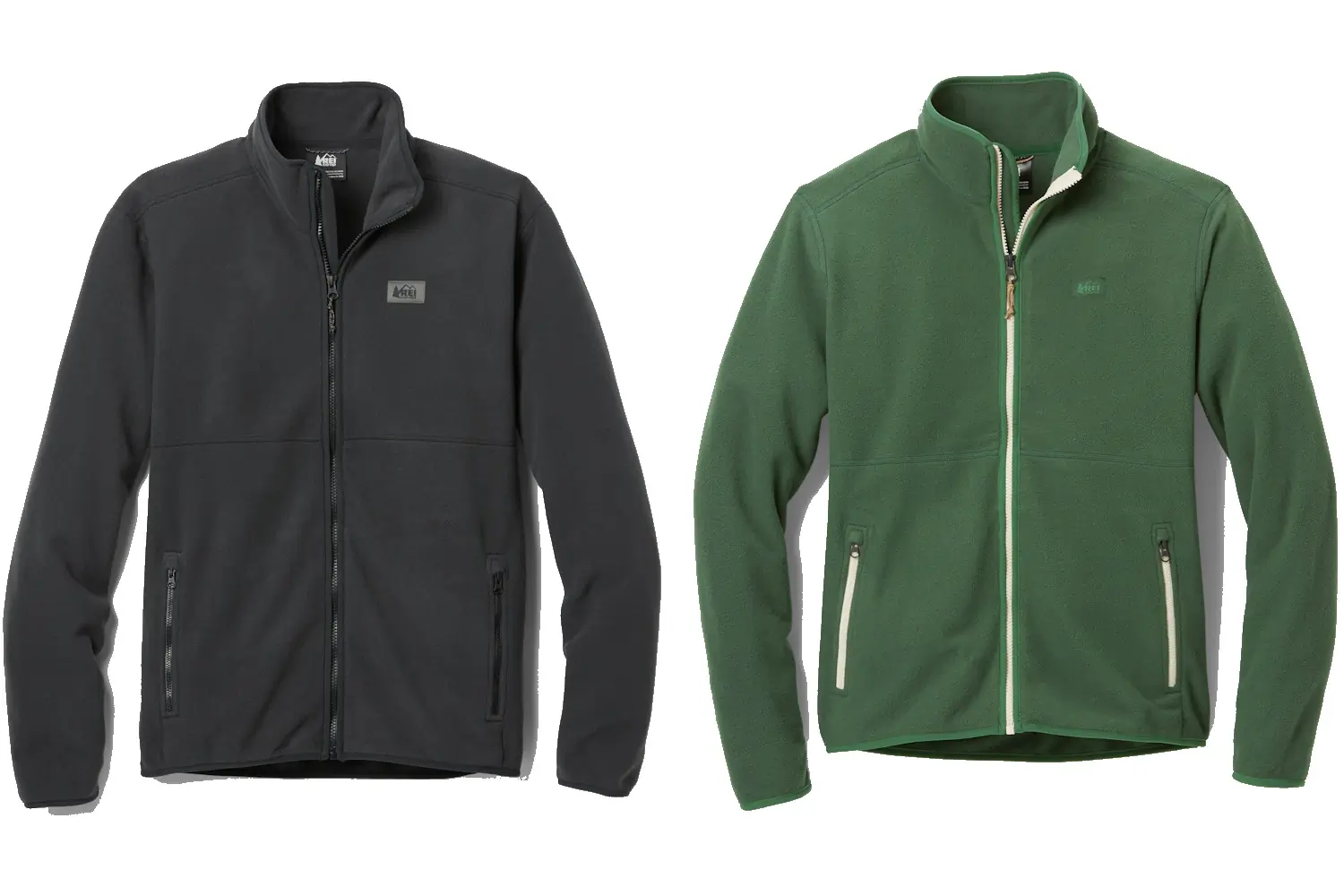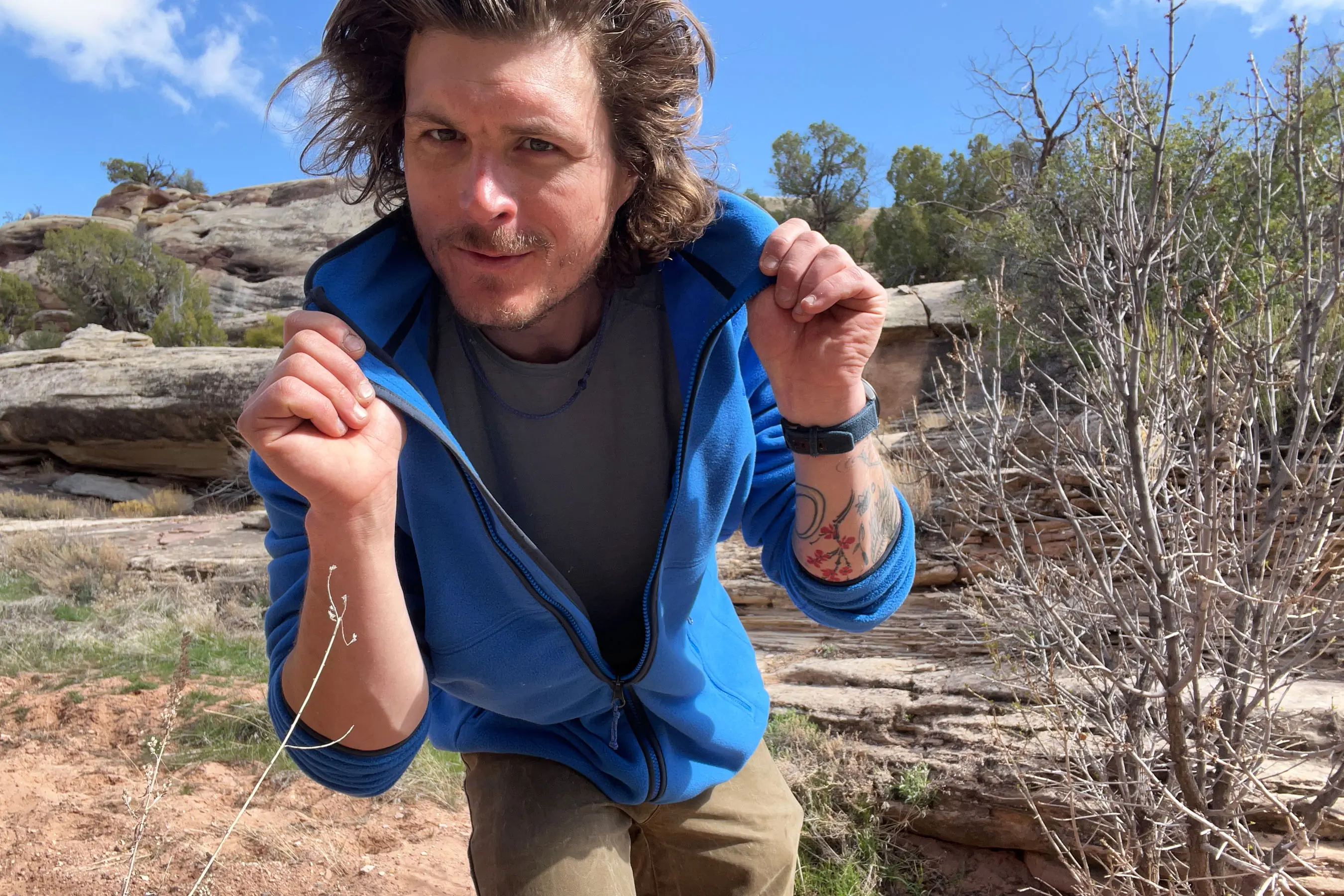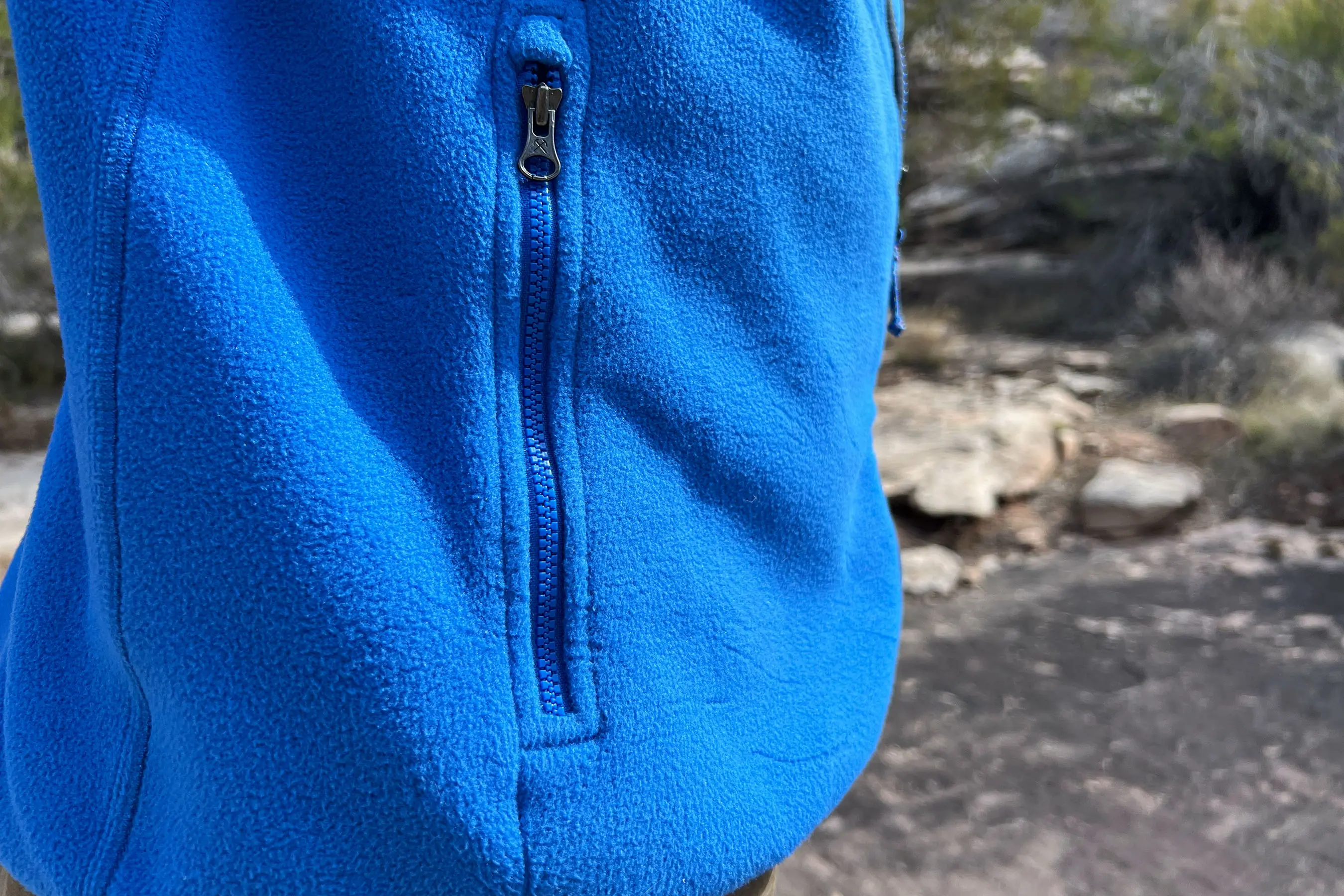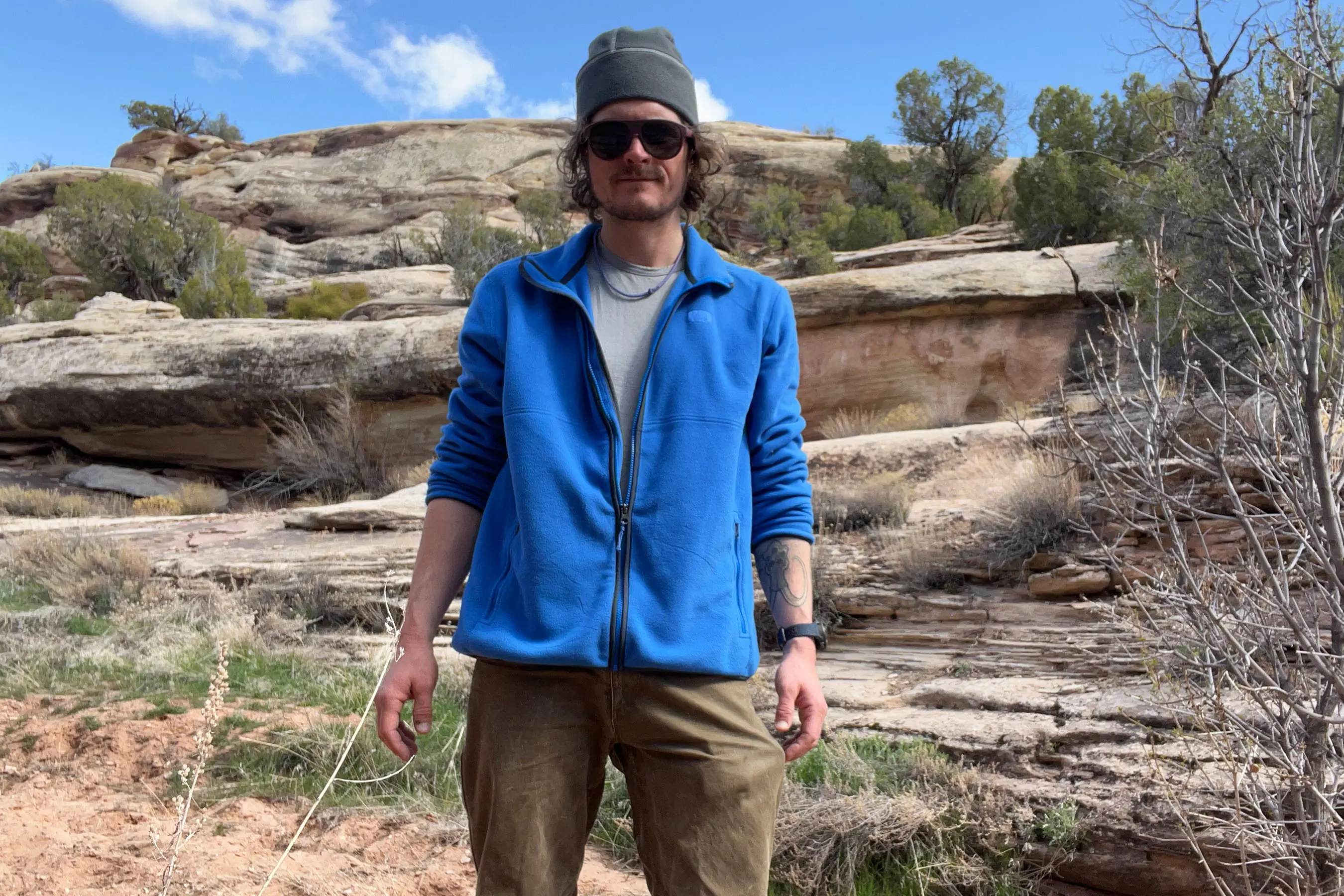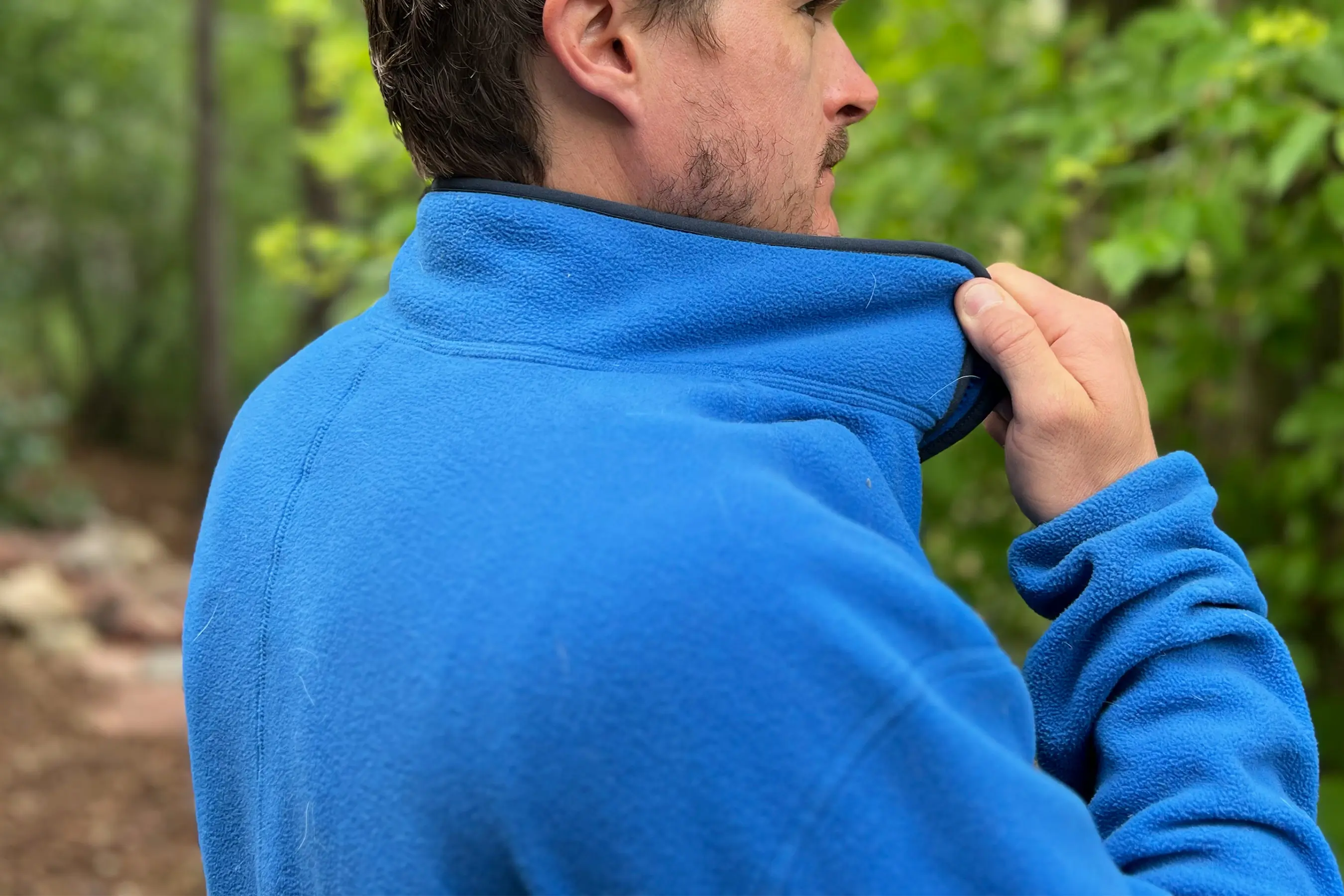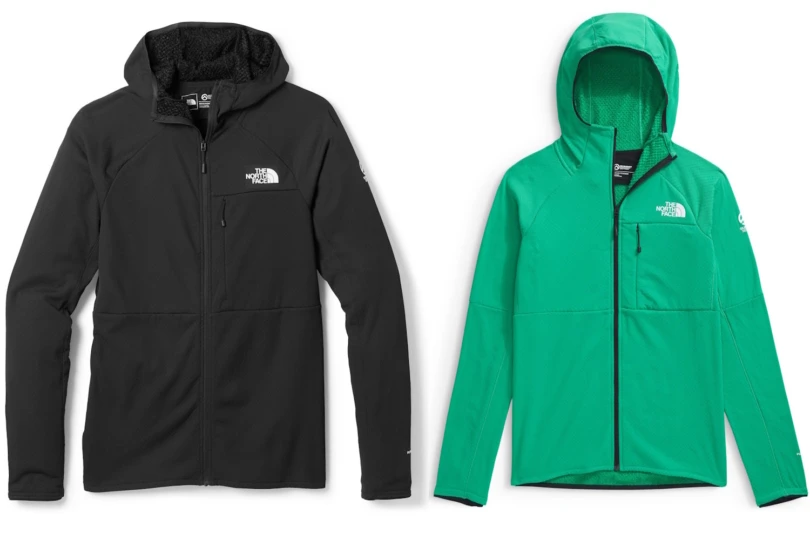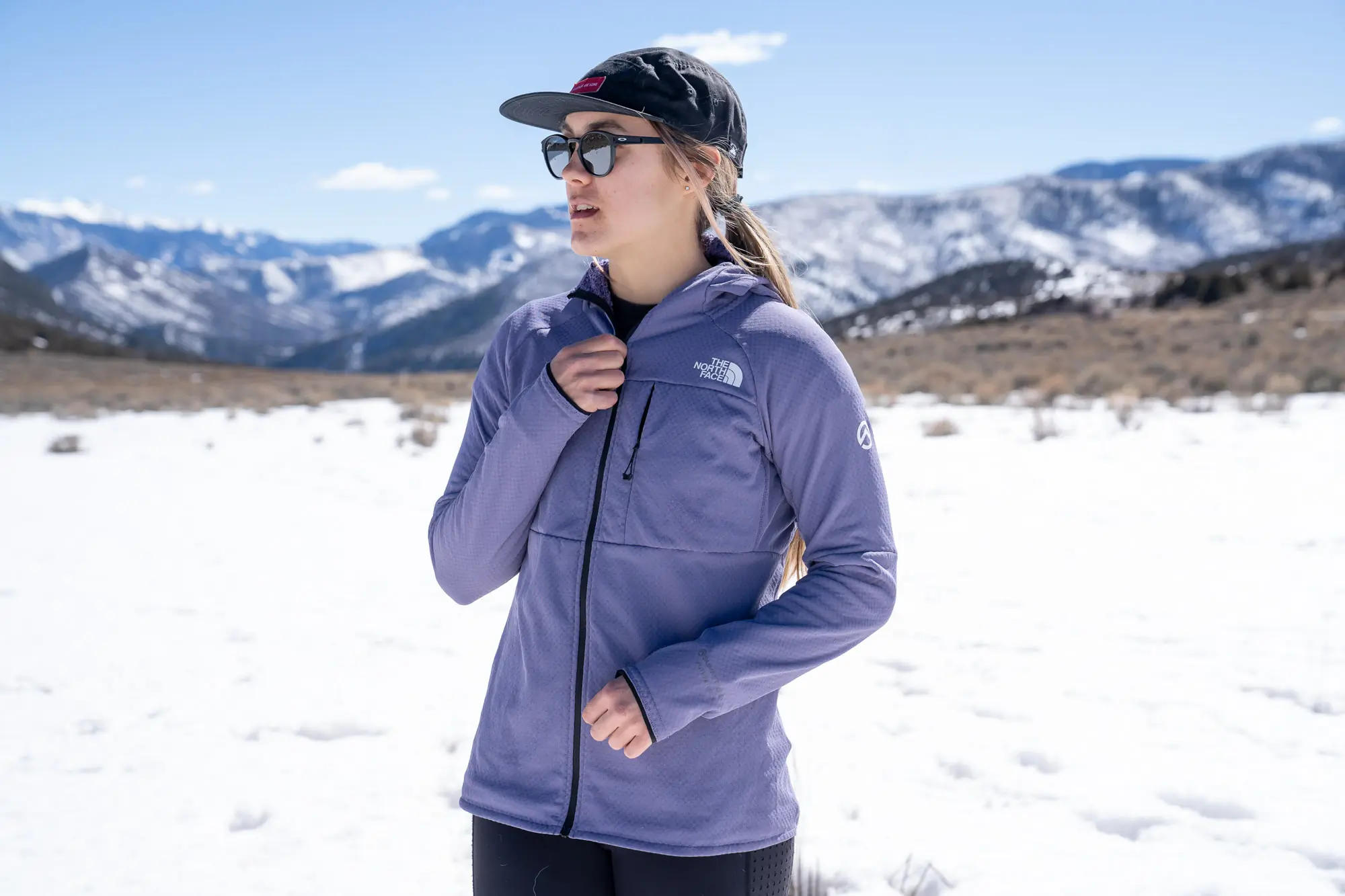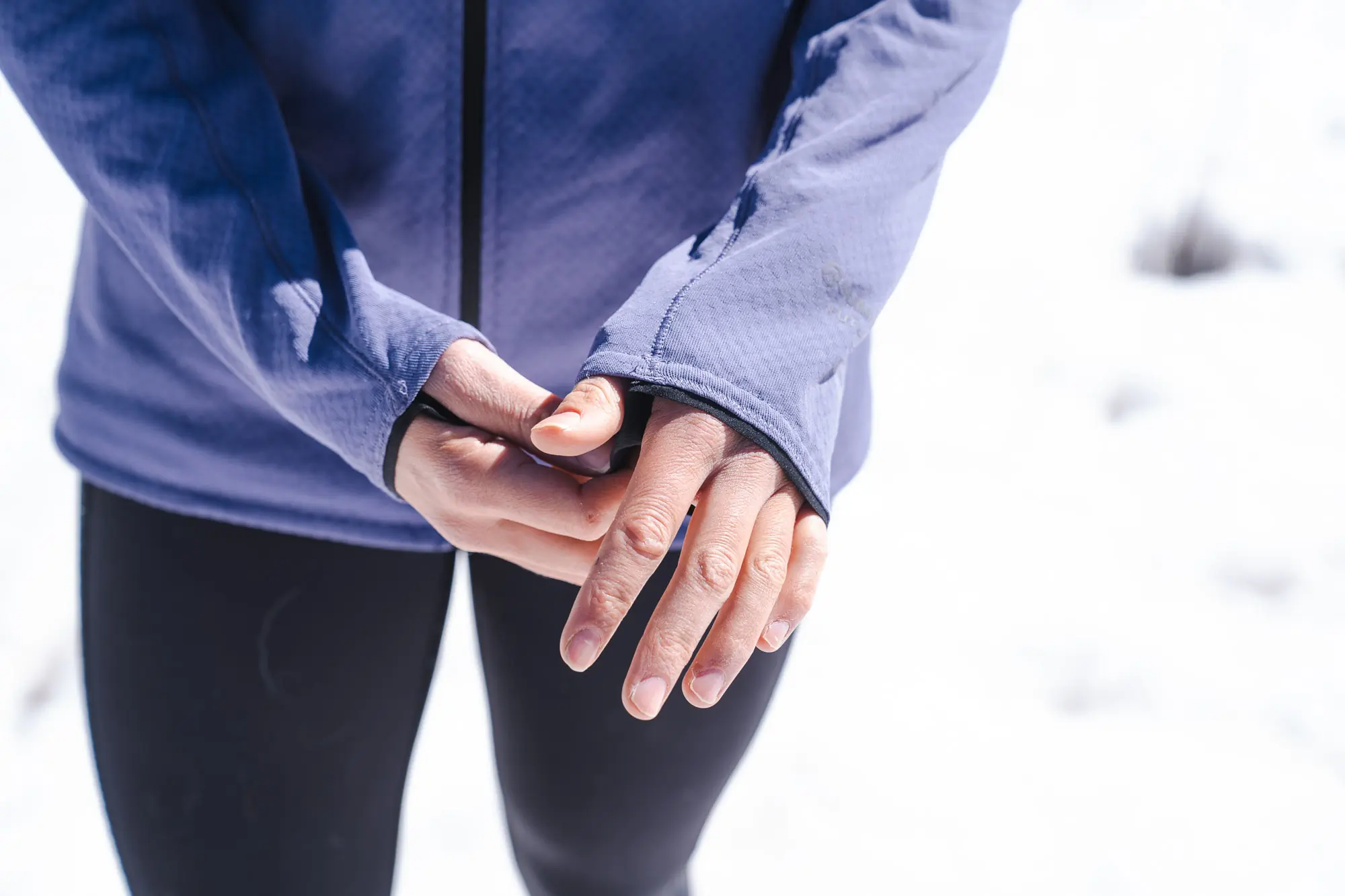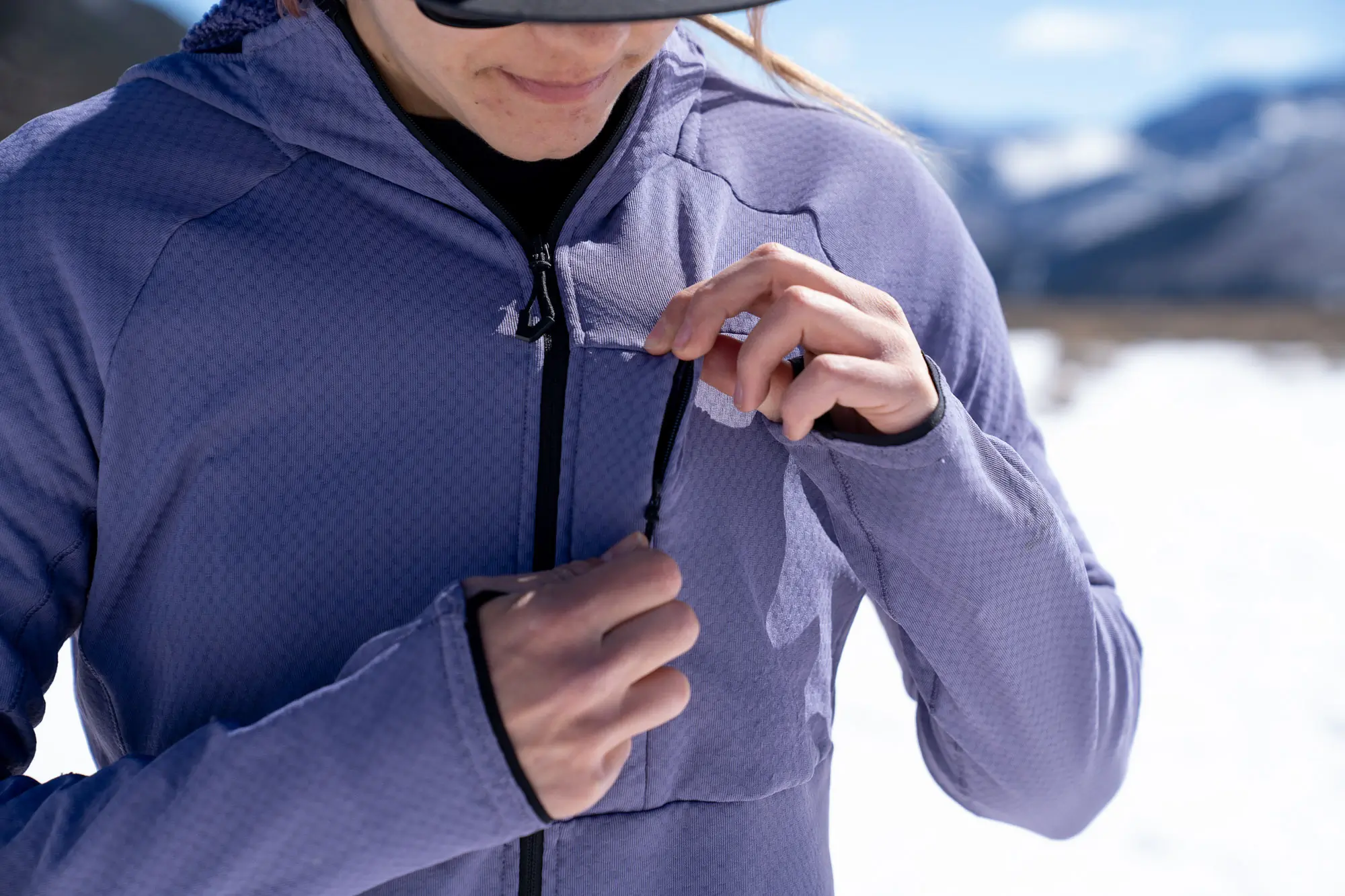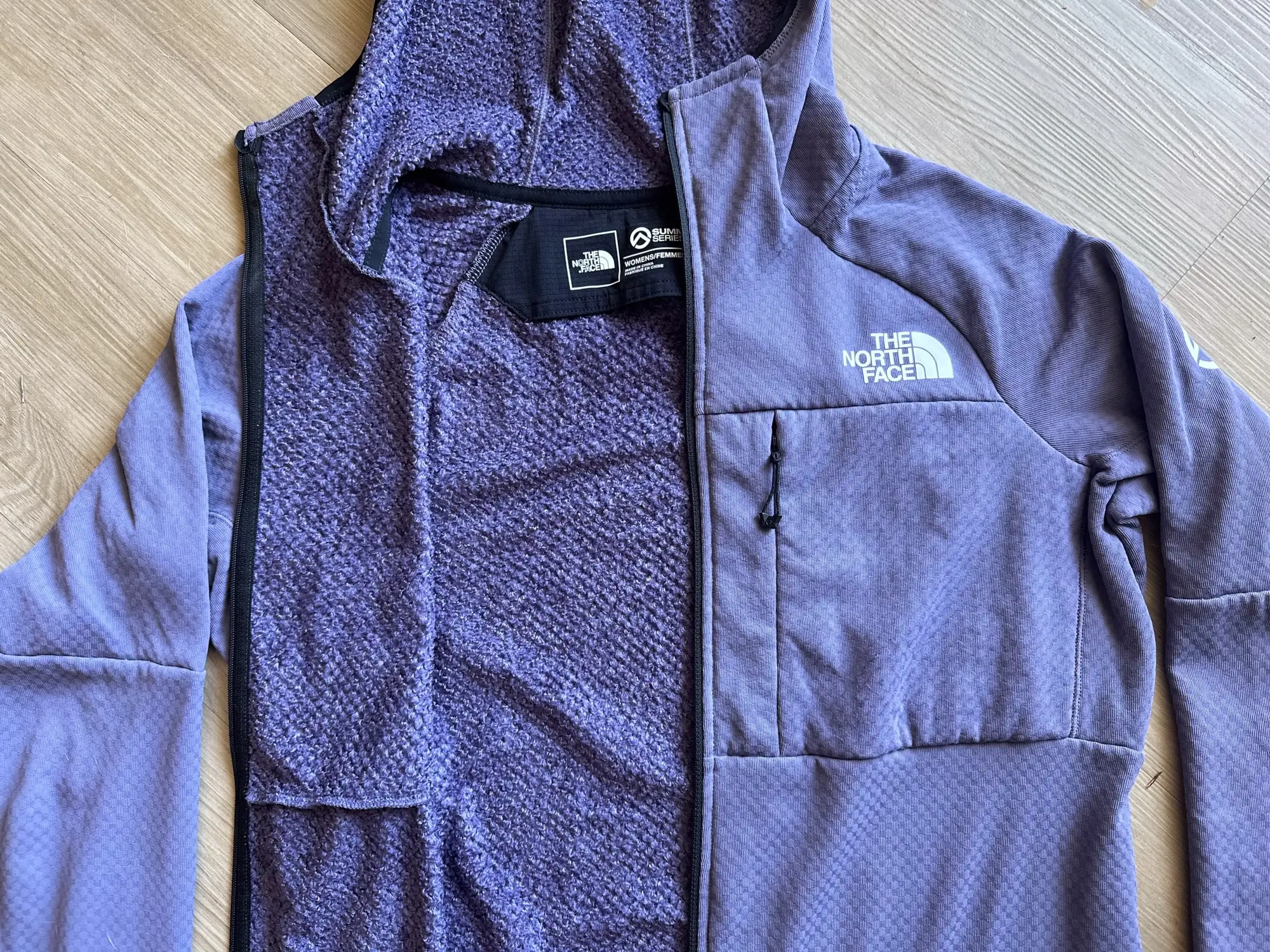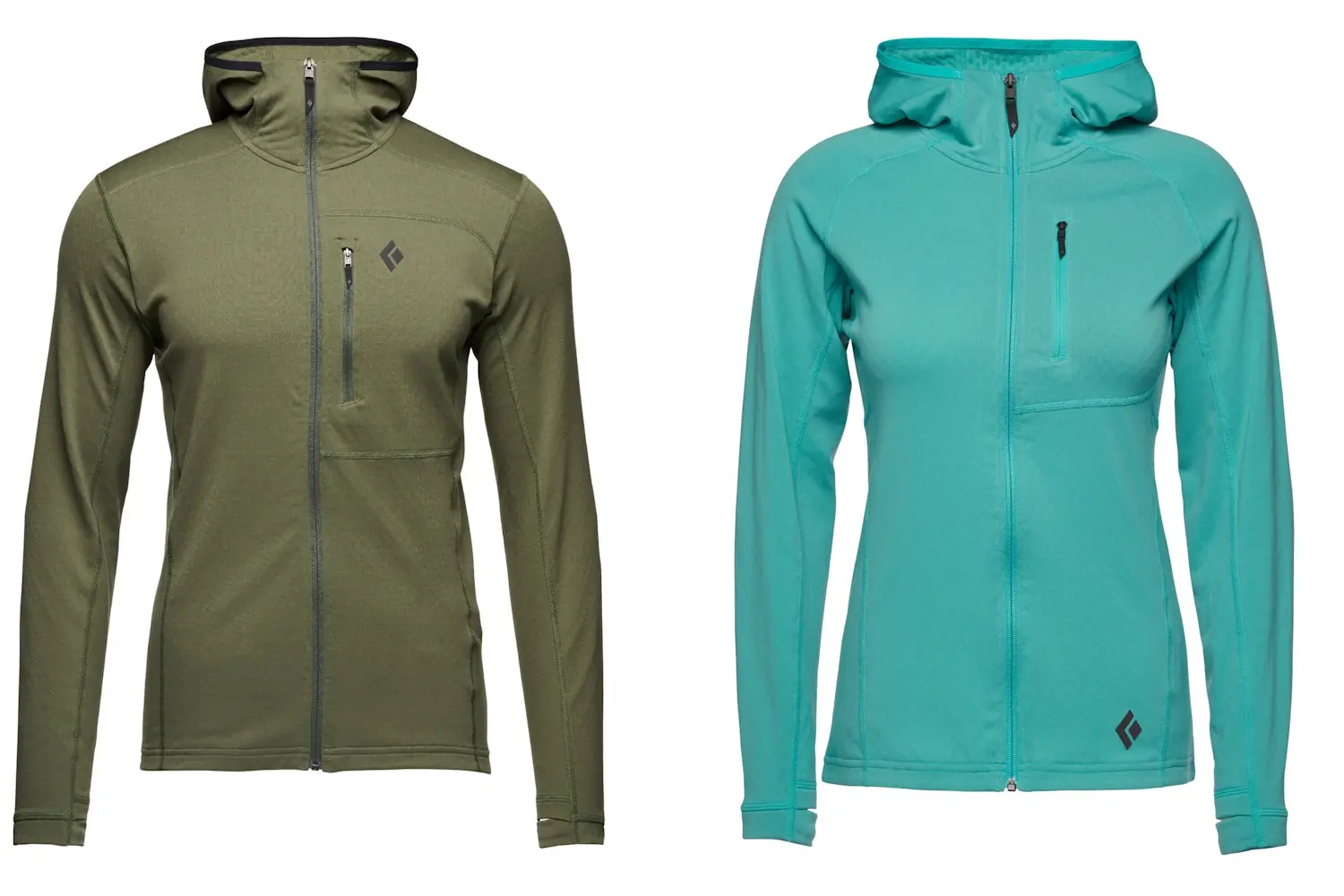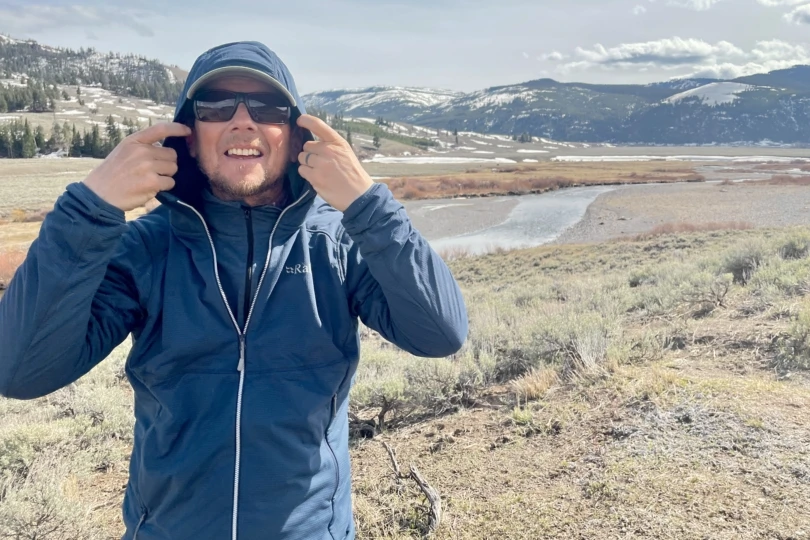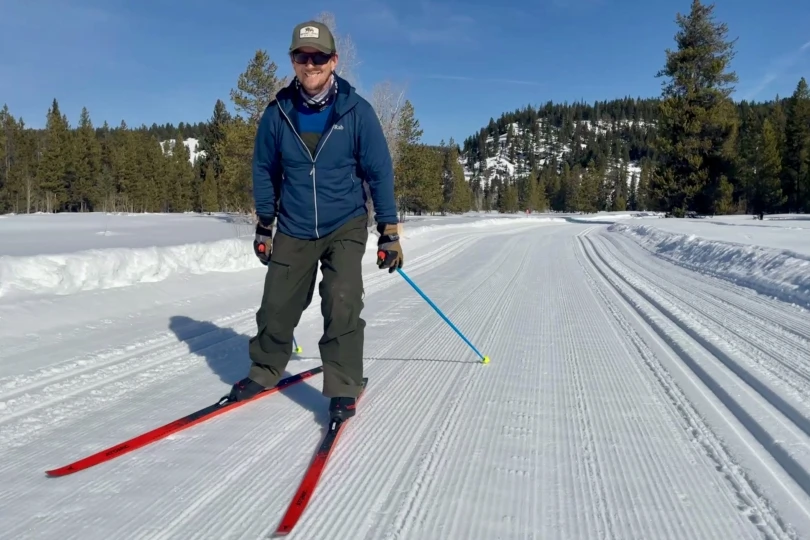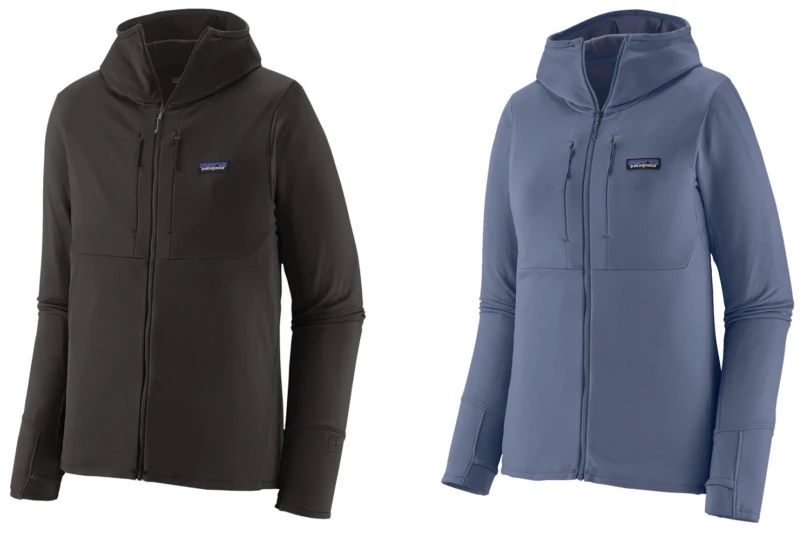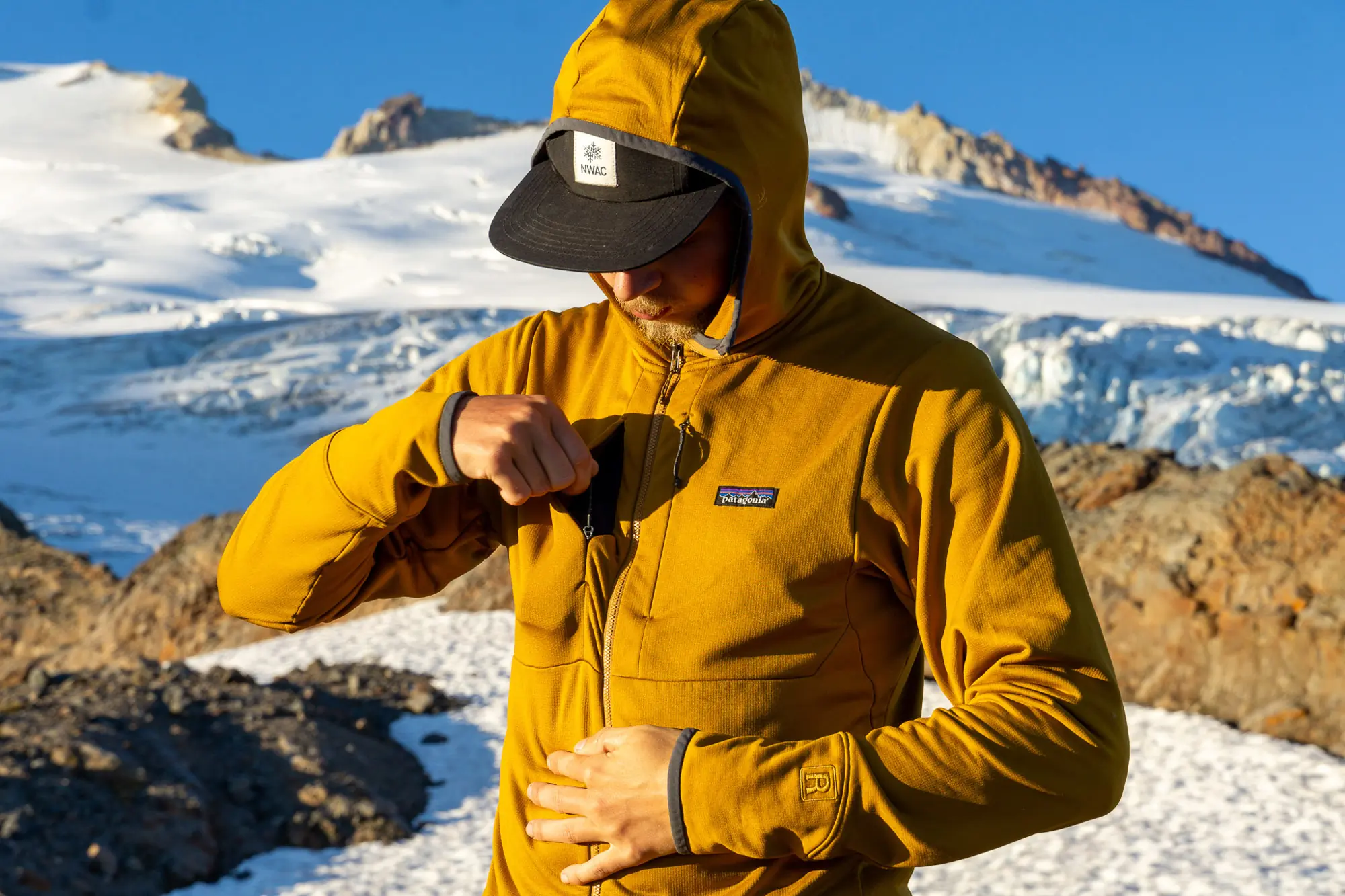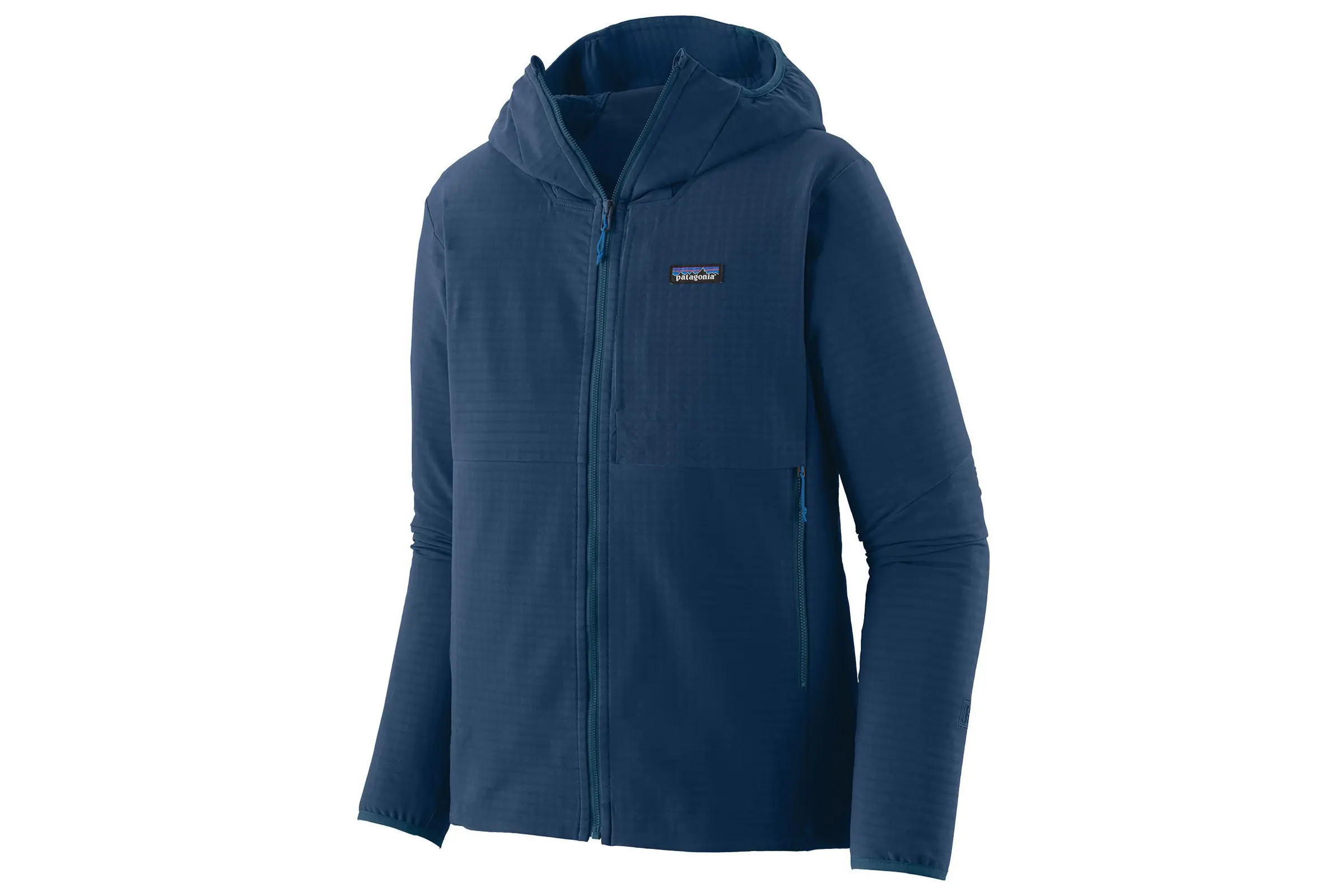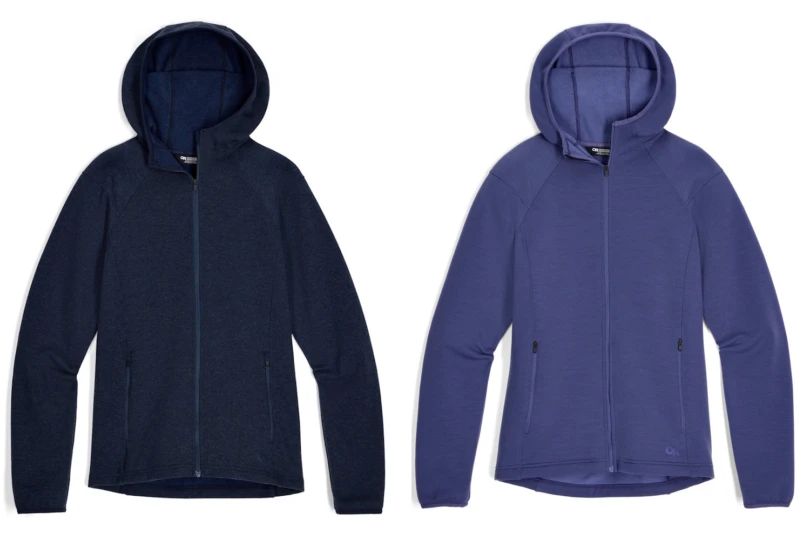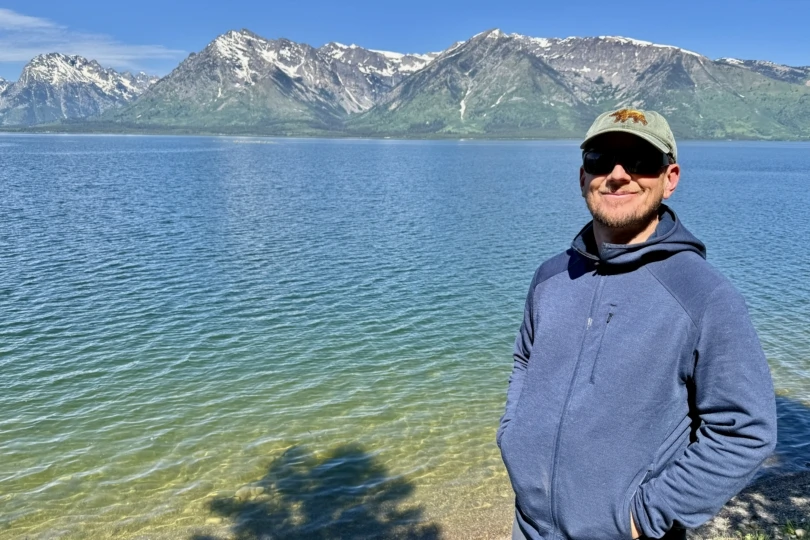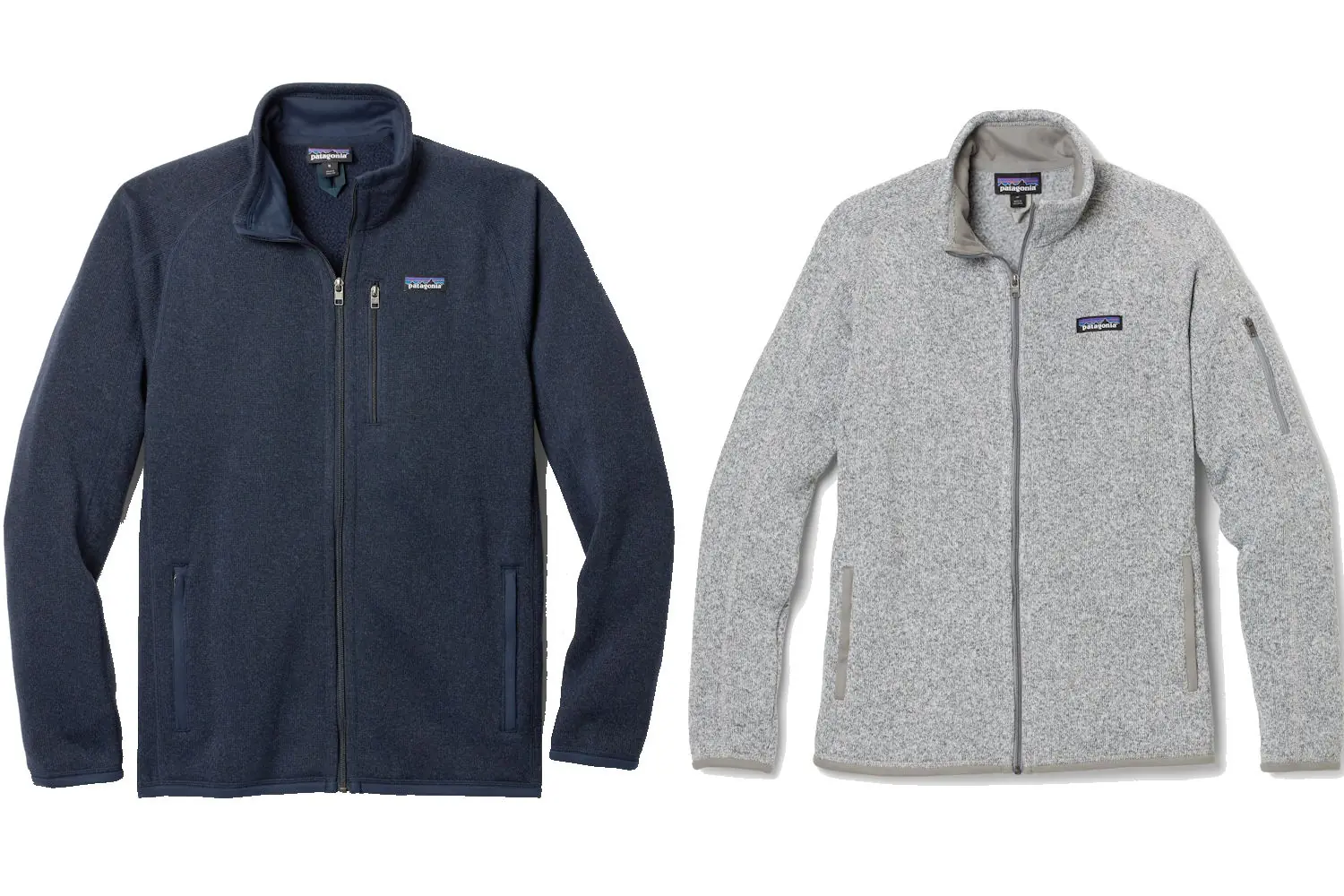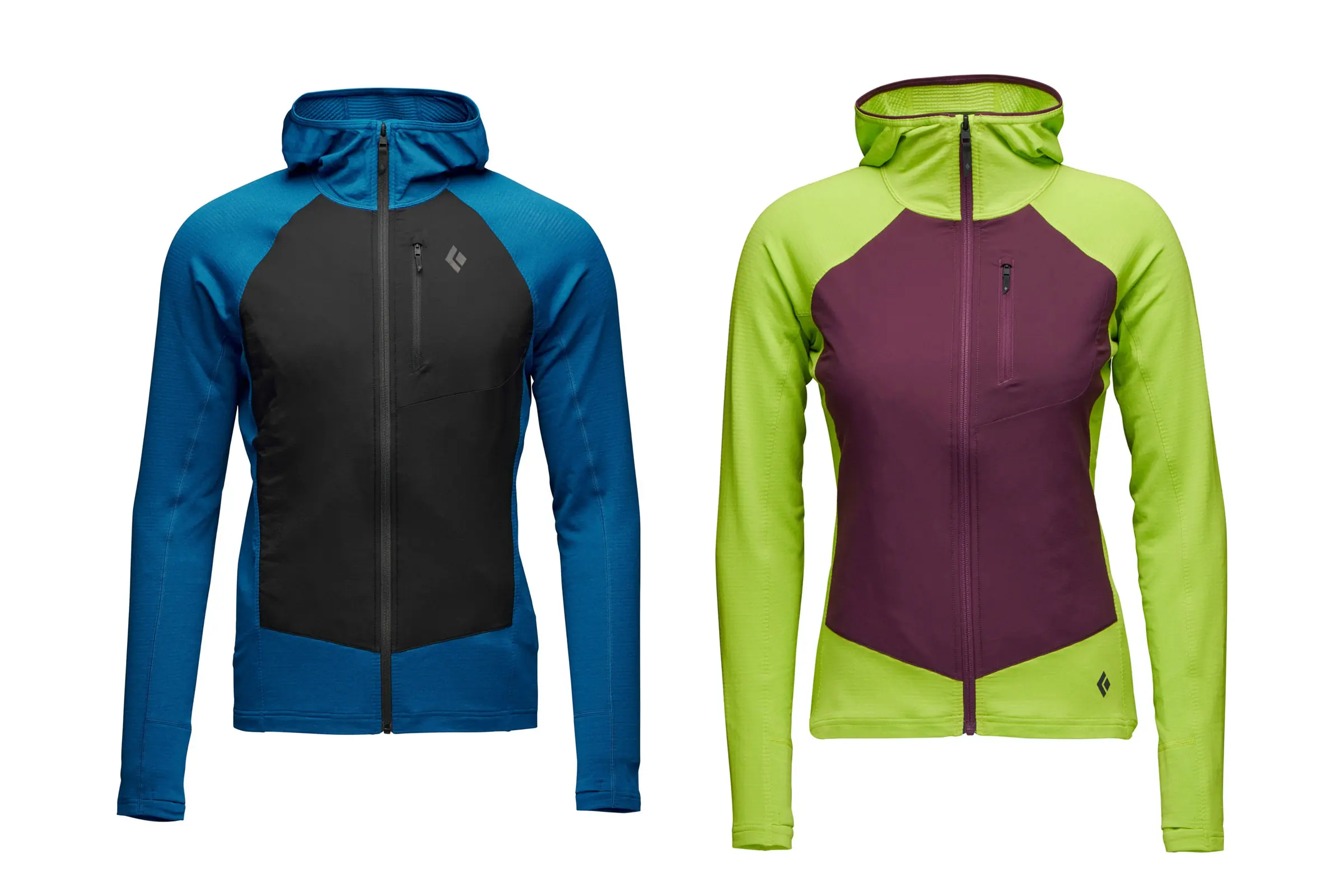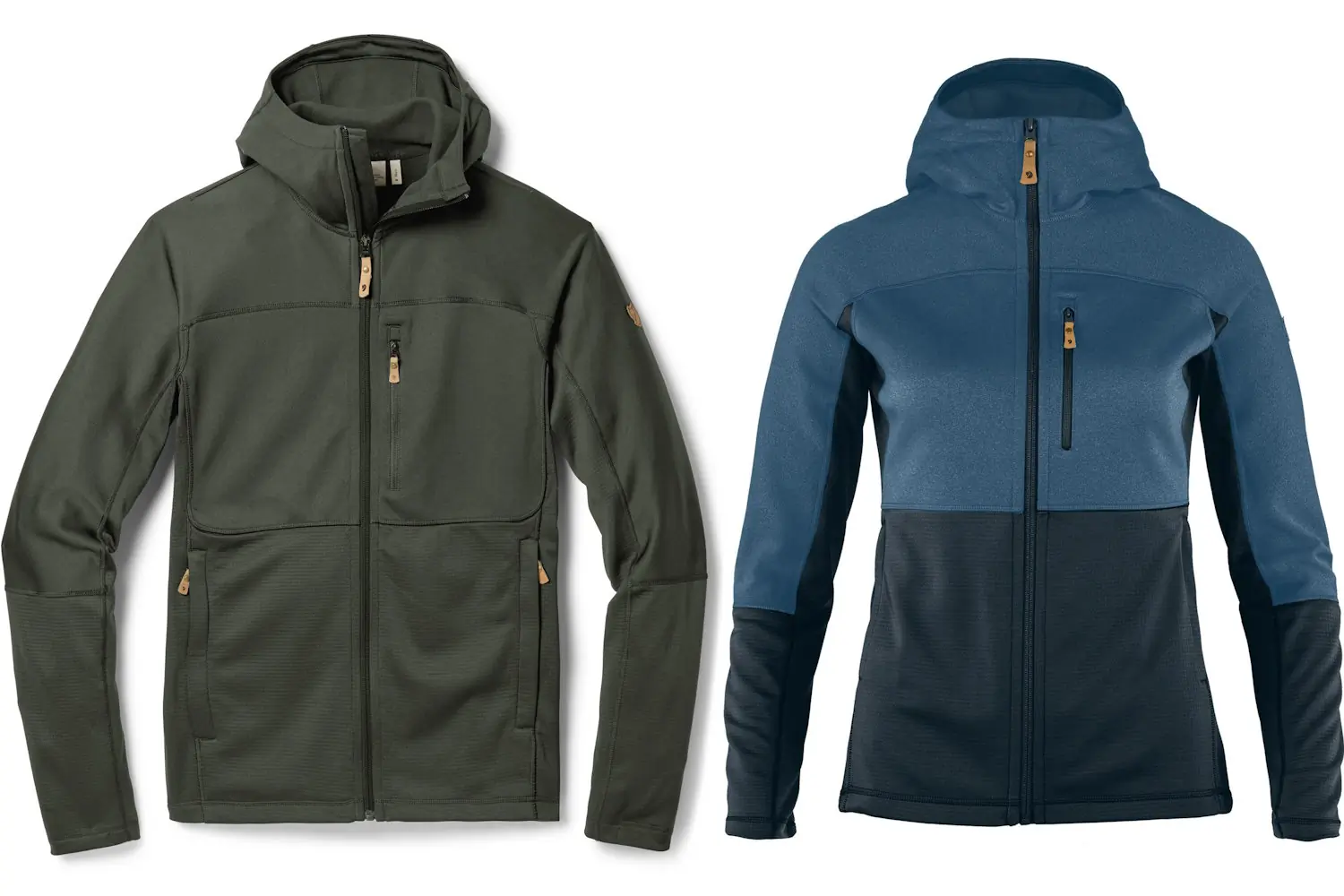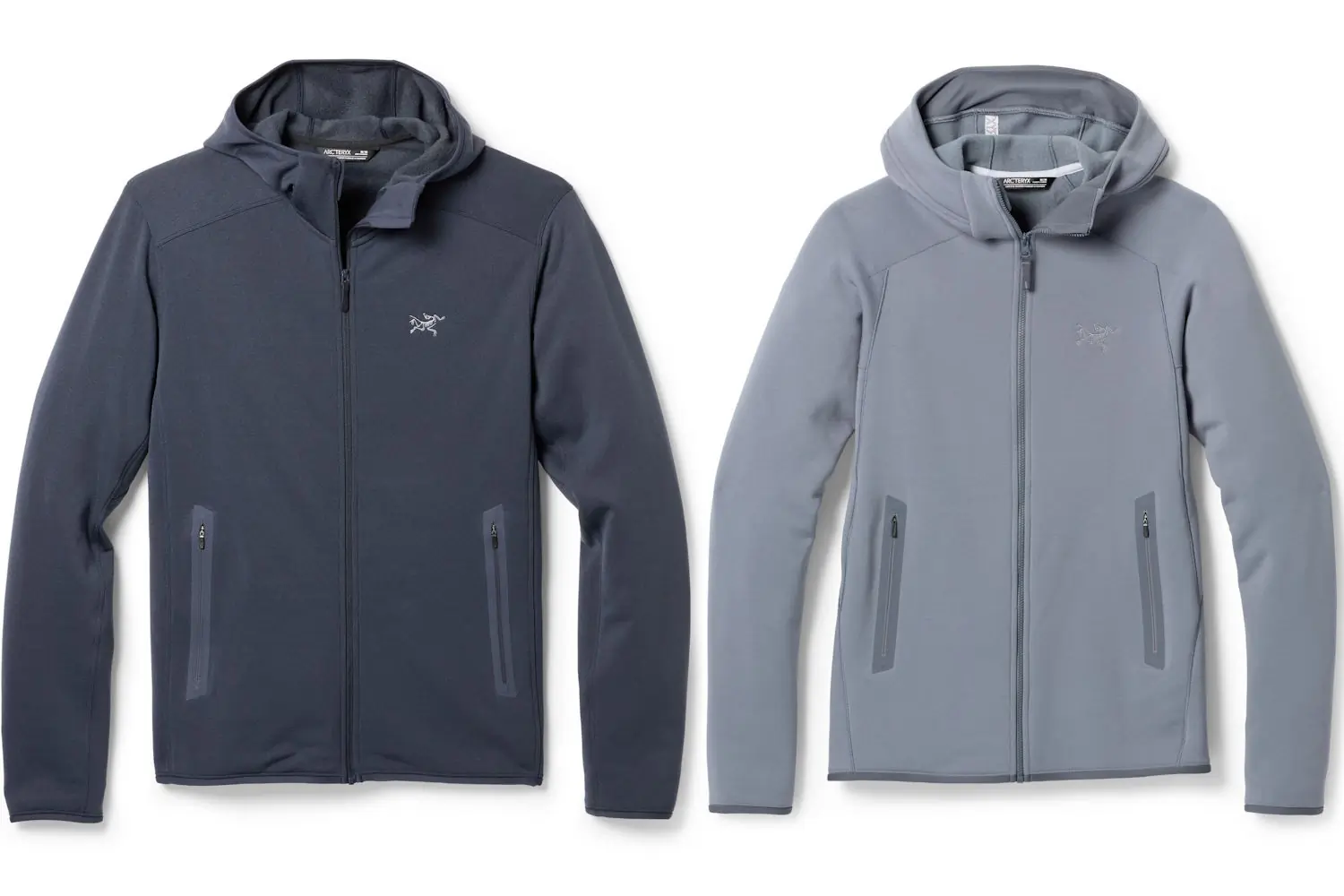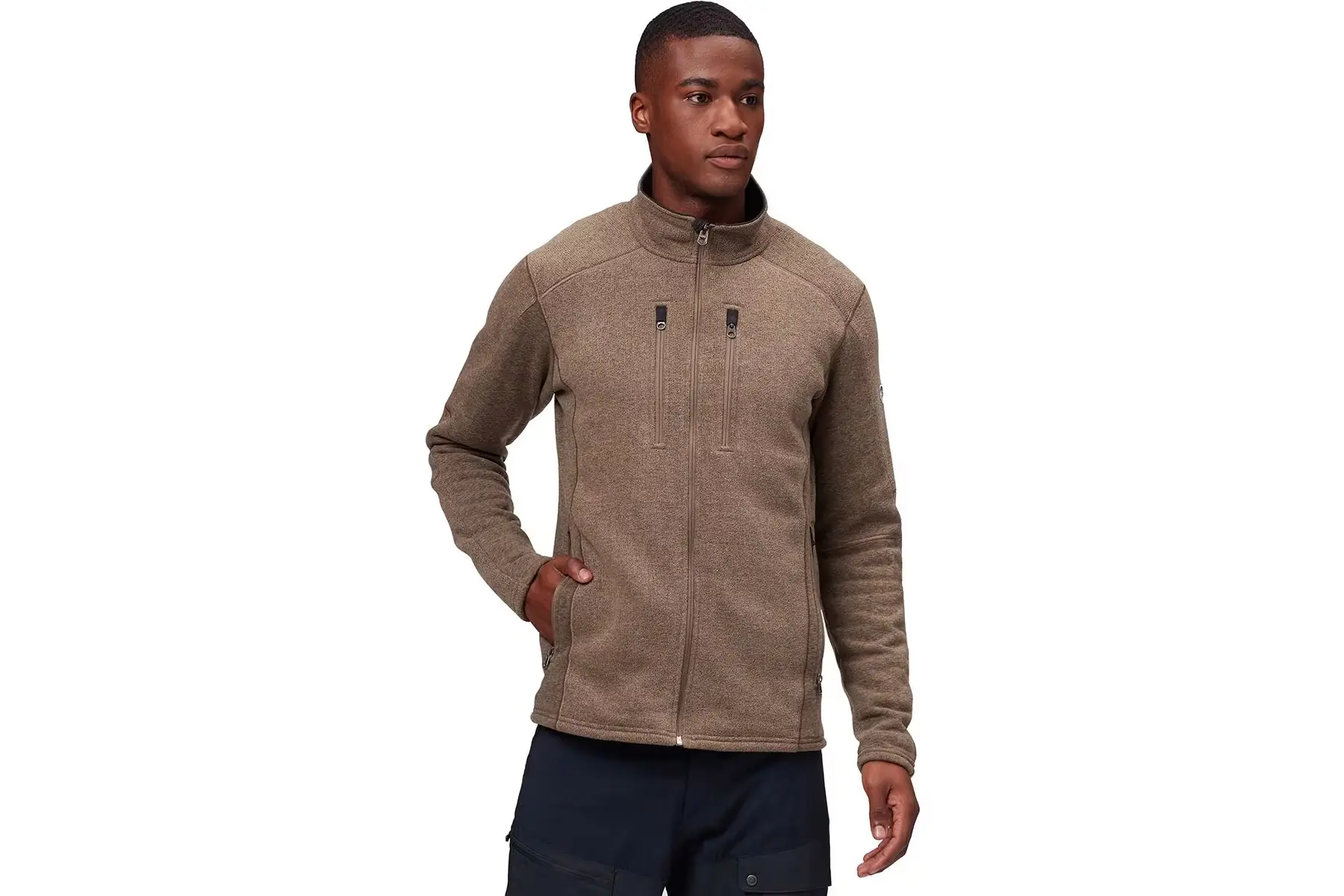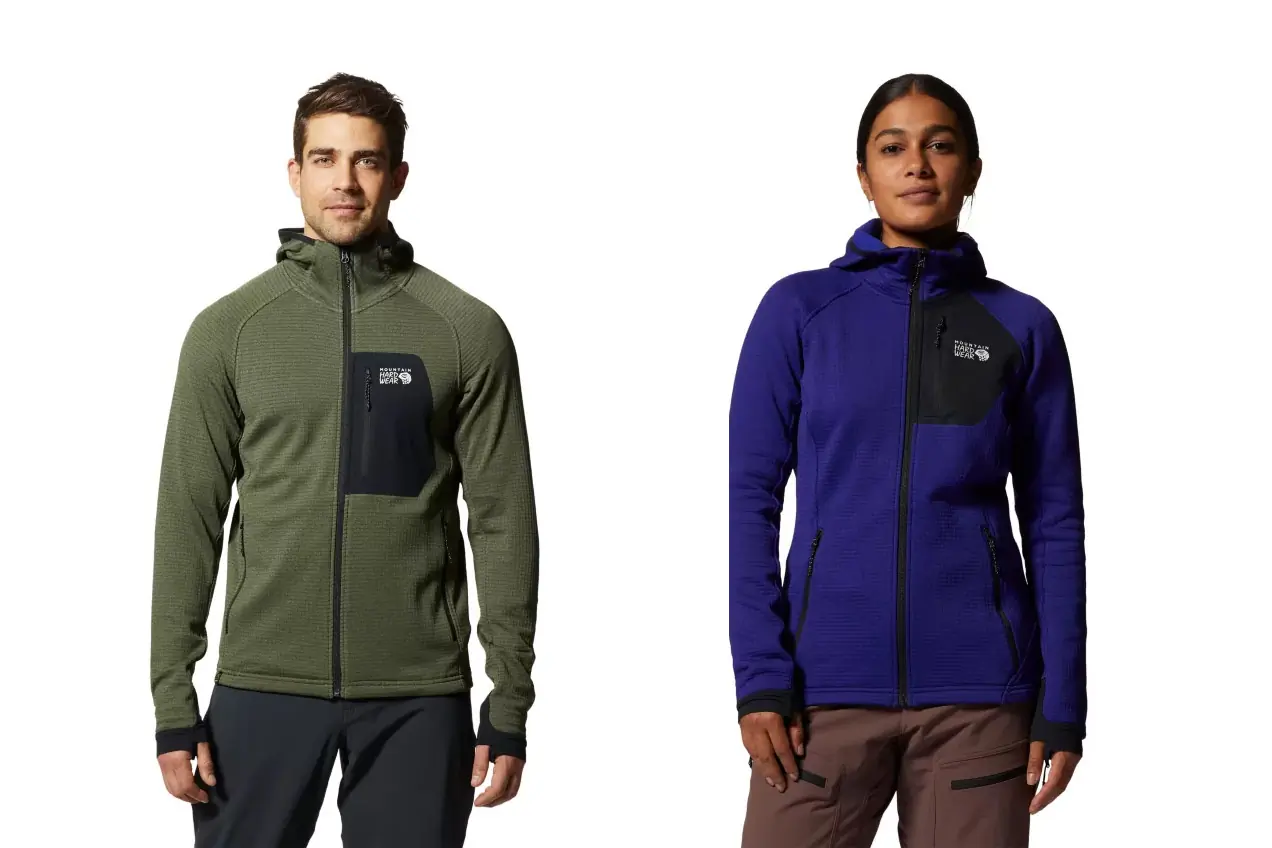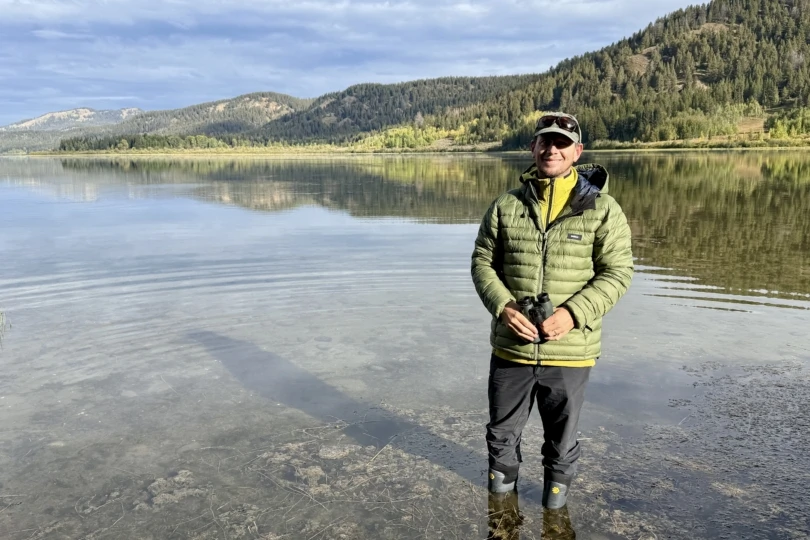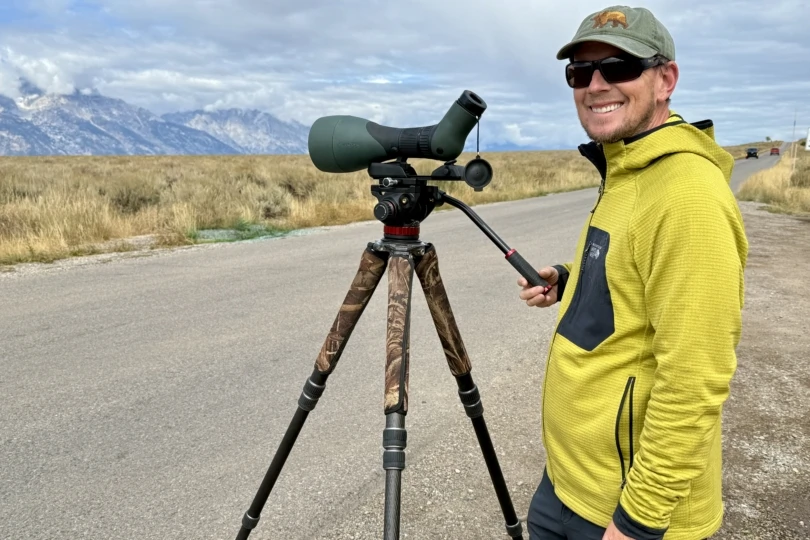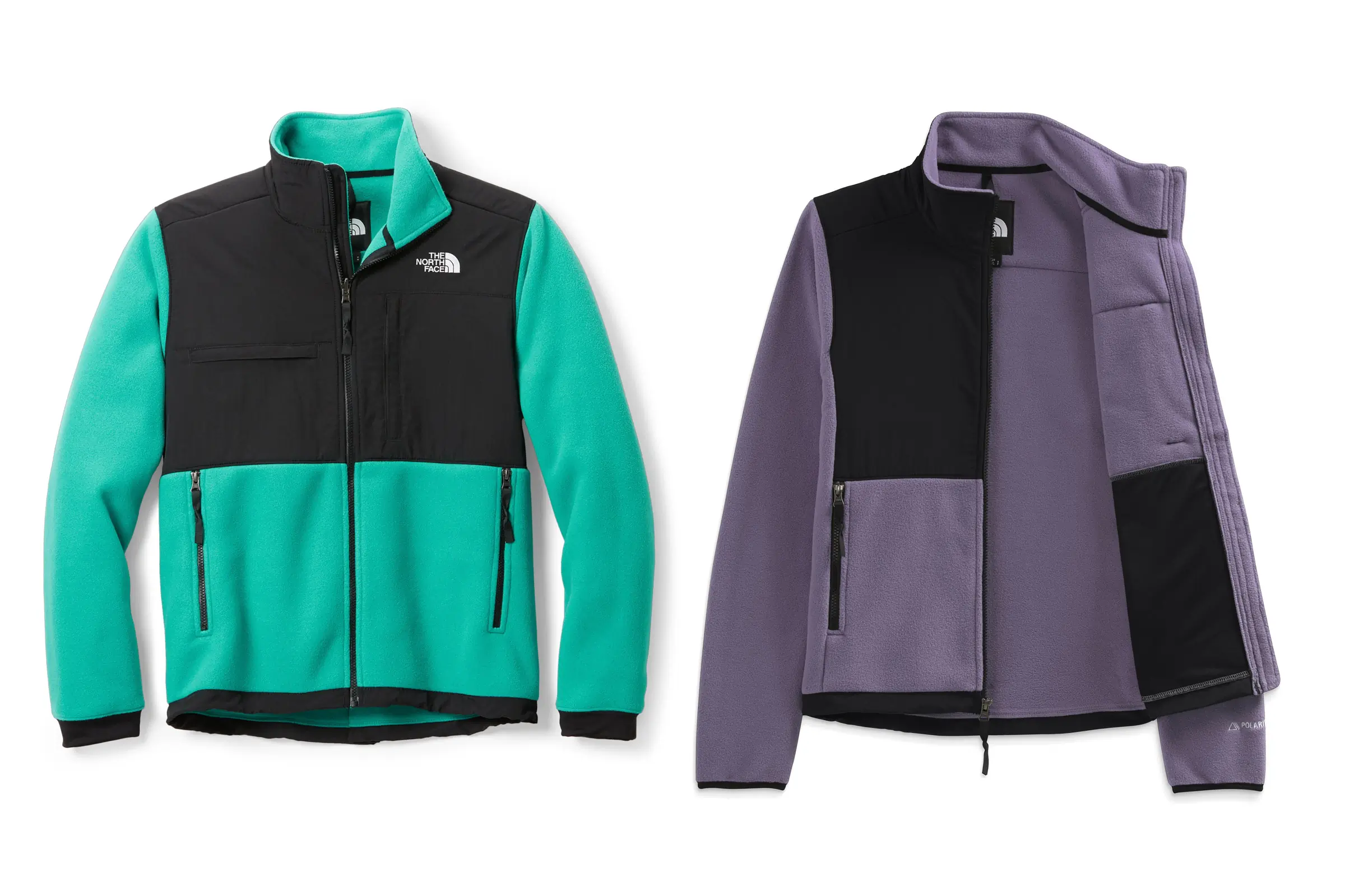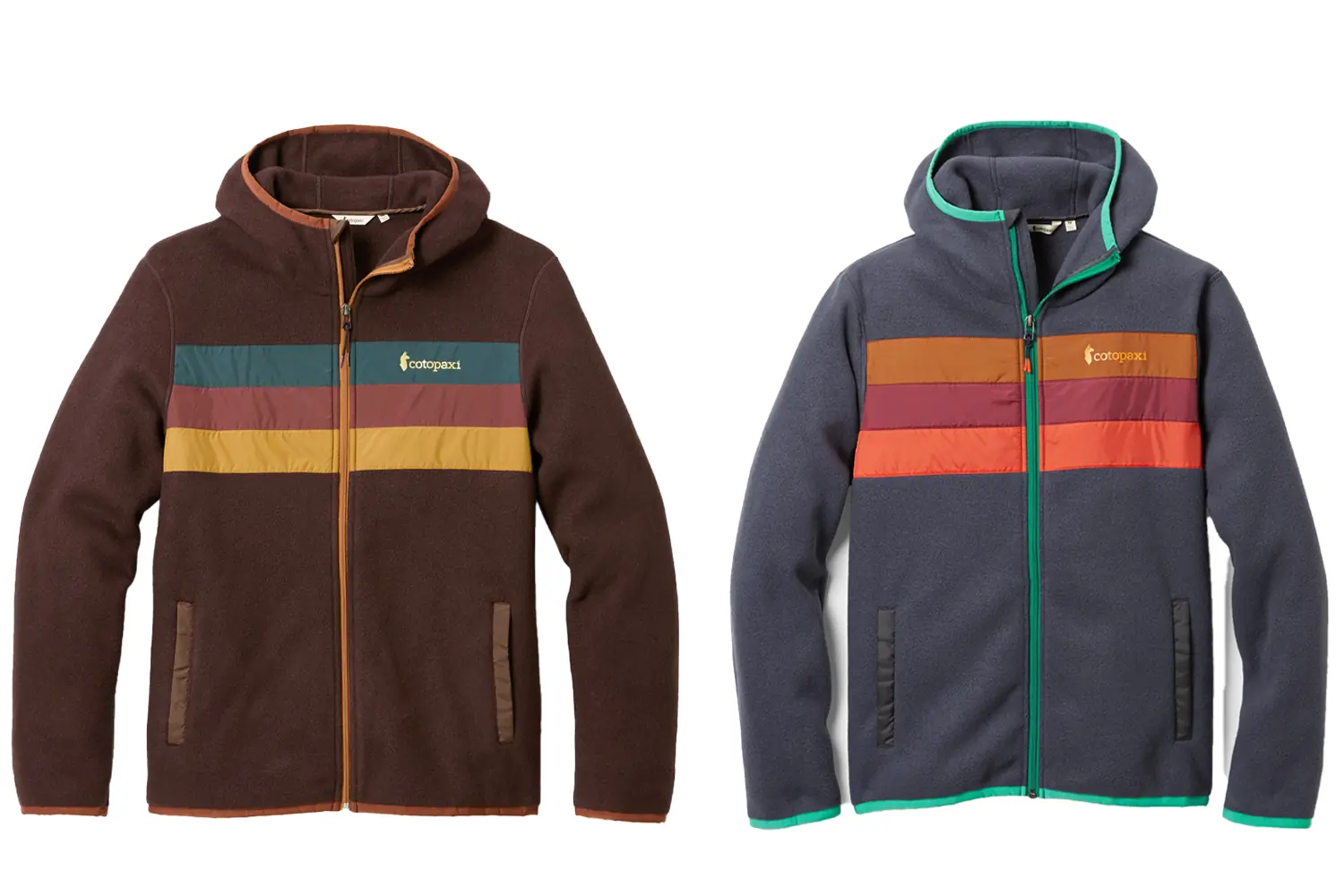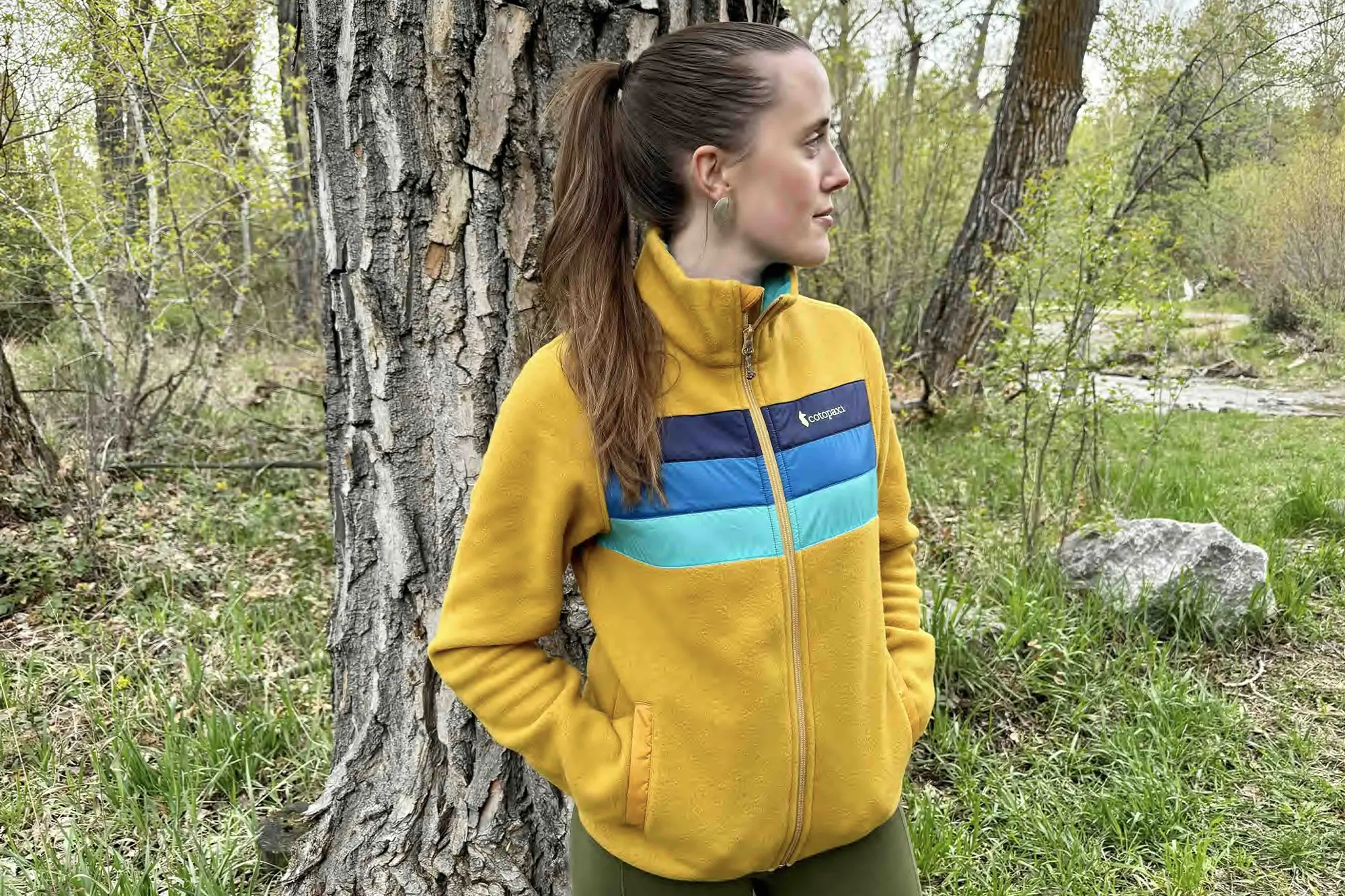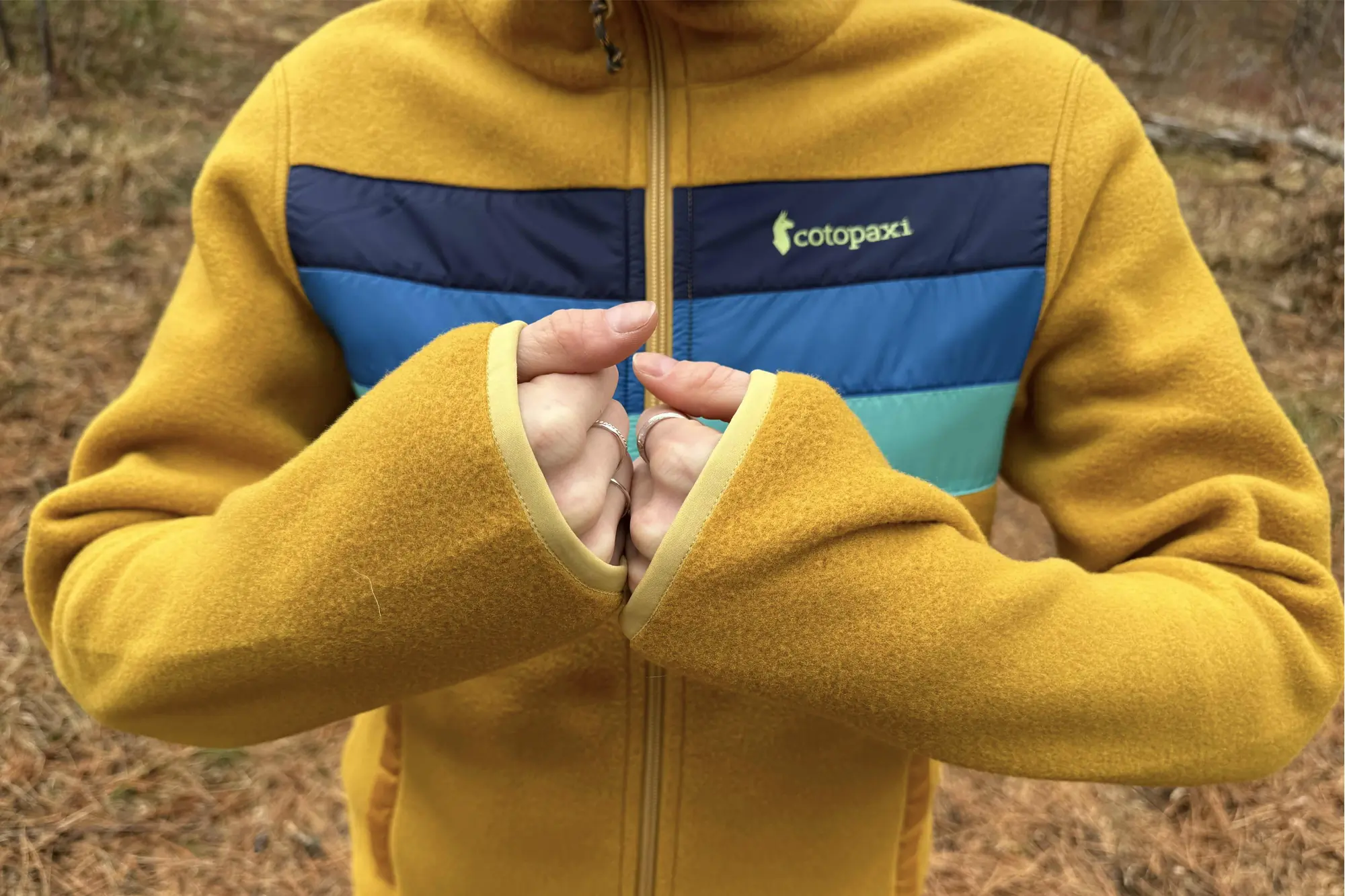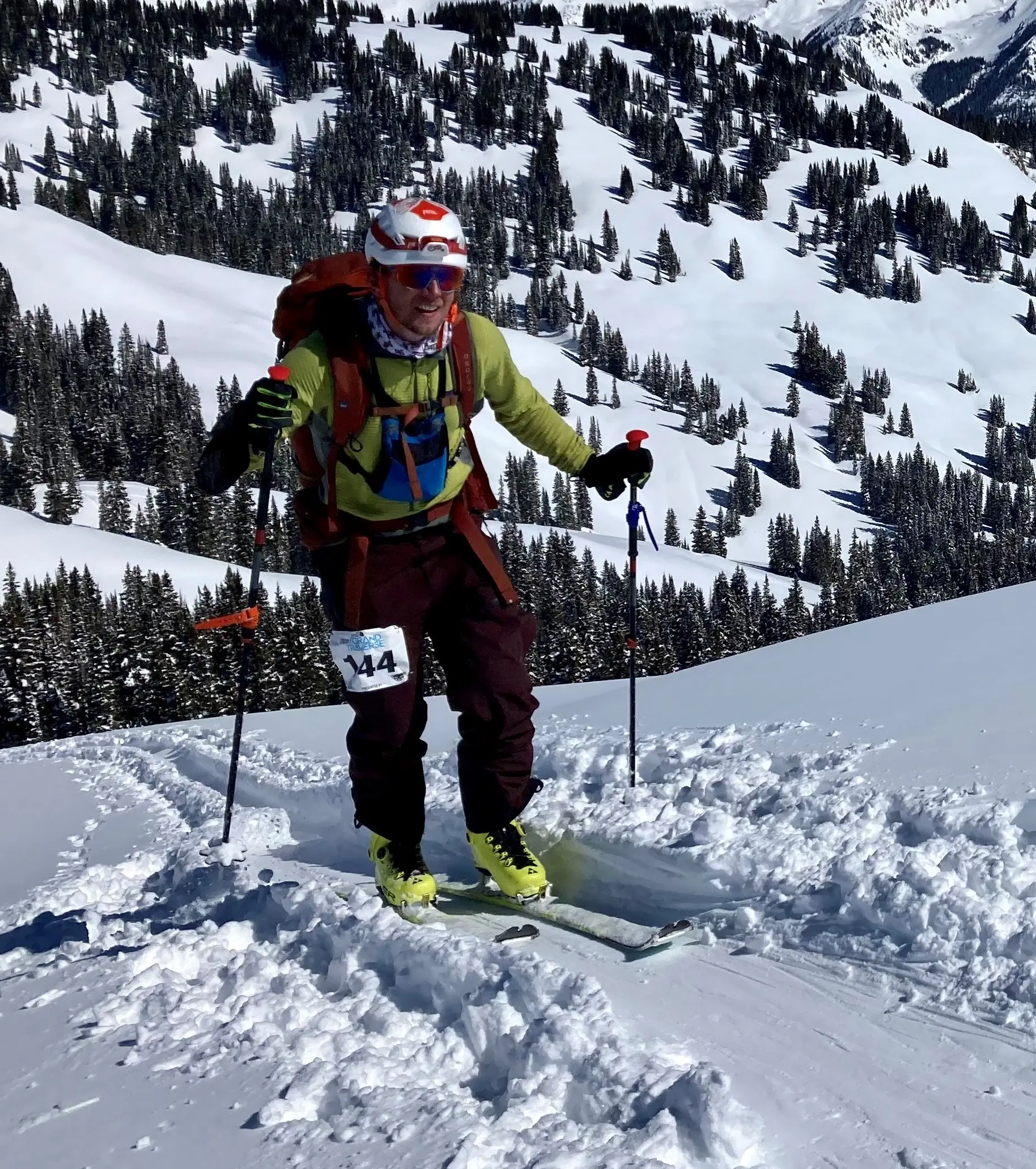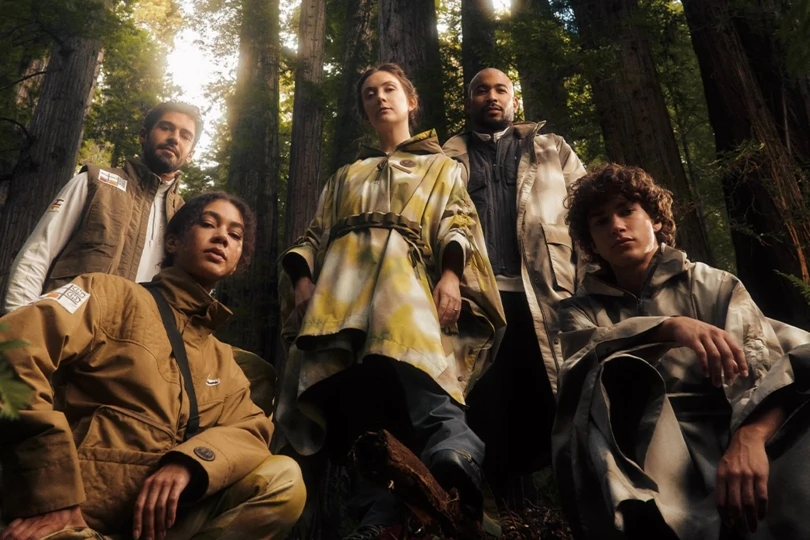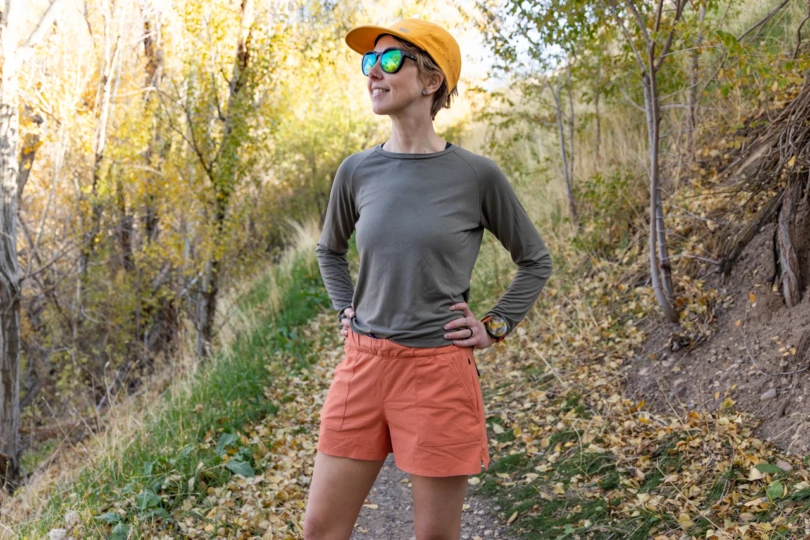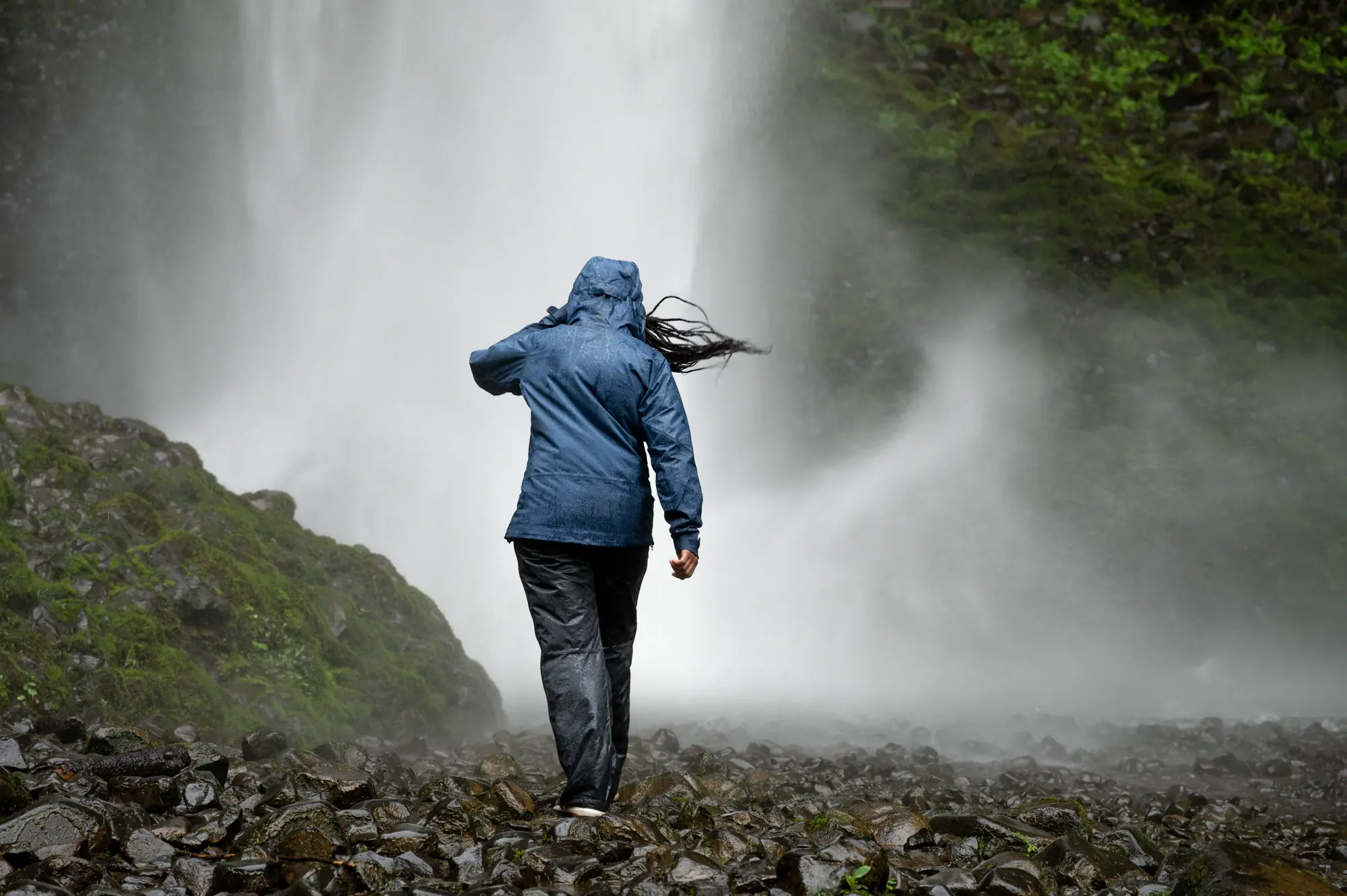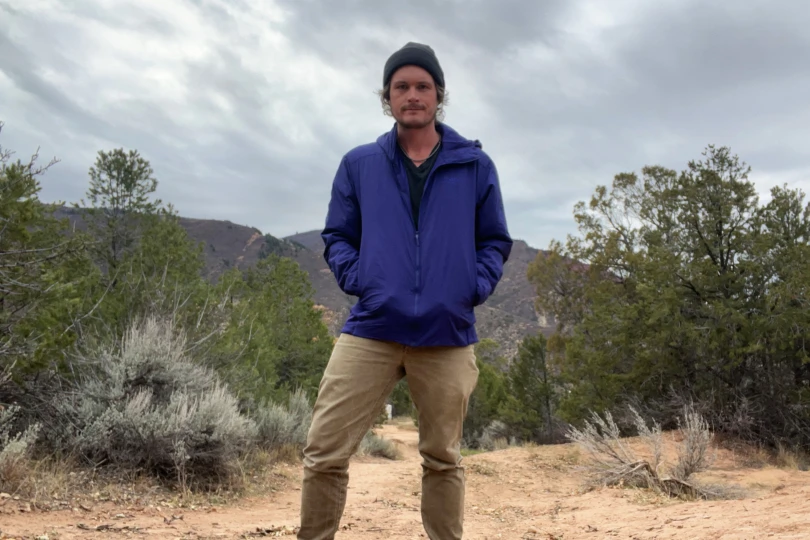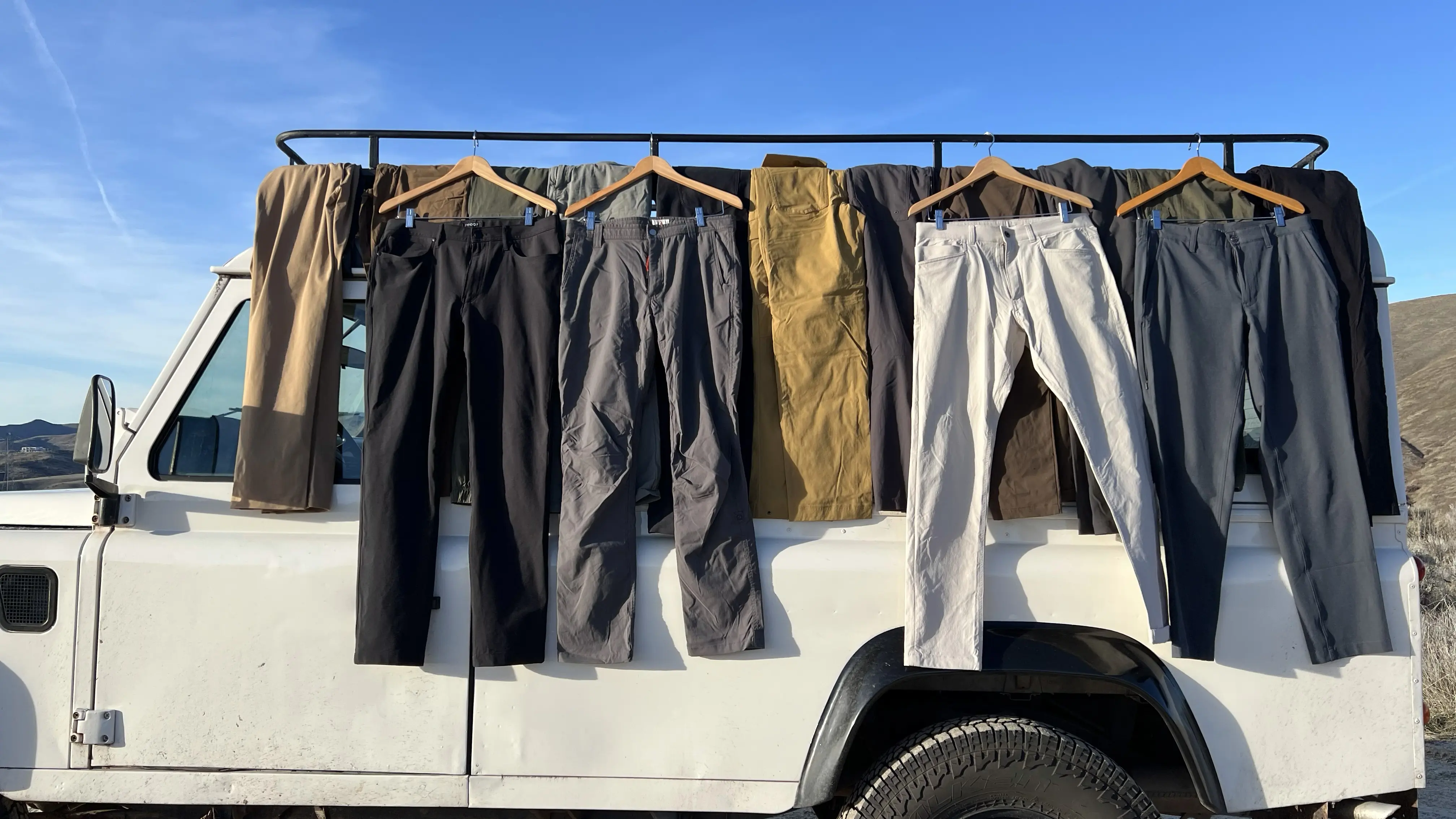Functional across seasons and conditions, the best fleece jackets trap just enough of your body heat while still letting air circulate — all while feeling soft and cozy against your skin.
Our team has spent years living in fleece. Current authors, Ryan Kempfer and Chris Kassar, have each worn and worked these layers hard, testing more than 20 models over the past year and hundreds overall. We’ve clung to fingertip holds thousands of feet above the ground, slogged endless miles of trail, and watched flames dance beside countless campfires with these fuzzy jackets on our backs just to narrow the field to the streamlined selection you see here.
Inside you’ll find a fleece for every mission: from our top pick, the Patagonia R1 Air Full-Zip Hoody, a standout for thru-hikes and long days on the move, to budget-friendly options like the REI Co-op Trailmade Fleece Jacket, perfect for errands, casual walks, and everyday warmth.
Editor’s Note: We updated this guide on October 31, 2025, adding the Rab Evolute Hoody, a lightweight and highly breathable fleece for active days; the Outdoor Research Crescent Fleece Full-Zip Hoodie, which delivers cozy warmth; and the Patagonia R1 Thermal Full-Zip Hoody, our top pick for frigid temps thanks to its place as the warmest R1 yet with a tighter grid fleece and weather-resistant outer face.
The Best Fleece Jackets of 2025-2026
Patagonia R1 Air Full-Zip Hoody
-
Warmth
7.5
-
Breathability
9.0
-
Durability
8.0
-
Style
7.0
- Weight: 12.9 oz. (men’s size M); 10.9 oz. (women’s size S)
- Fit: Athletic
- Fabric: 100% recycled polyester fleece
- Density: N/A
- Weather resistance: No weather treatment
- Pockets: Two handwarming, one on chest
Pros
- Super-breathable zig-zag grid fleece
- Lightweight
- Wide range of sizes
- Cozy on-skin feel with snug fit
Cons
- Not very much static warmth
- Wind resistance isn't great
- No thumb loops
REI Co-op Trailmade Fleece Jacket
-
Warmth
7.0
-
Durability
8.0
-
Style
5.0
-
Breathability
6.0
- Weight: 12.7 oz.
- Fit: Casual
- Fabric: 100% recycled polyester fleece
- Weather resistance: No weather treatment
Pros
- Extremely low price
- Lightweight
- Cozy, loose fit
- Plethora of colors to choose from
Cons
- Doesn’t shield wind, rain, or snow
- While it’s soft, not everyone loves polyester against the skin
The North Face FUTUREFLEECE Full-Zip Hoodie
-
Warmth
6.0
-
Breathability
8.0
-
Durability
7.0
-
Style
7.0
- Style: Fleece hoodie
- Material: 124 g/m² Teijin Octa FUTUREFLEECE — 55% polyester, 45% recycled polyester
- Insulation: Grid fleece
- Weight: 6.2 oz.
- Pockets: One
Pros
- Octa fleece is highly breathable, but holds warmth well when under a layer
- Extremely lightweight
- Versatile layering option
- Stretchy material is easy to move in
Cons
- Not enough pockets
- No wind resistance
- Thumb loops are a little fragile
Black Diamond Coefficient Fleece Hoody
-
Warmth
8.0
-
Durability
8.0
-
Style
5.0
-
Breathability
9.0
- Weight: 12.9 oz.
- Fit: Athletic
- Fabric: 51% polyester/36% nylon/13% elastane
- Weather resistance: Moisture proof zipper lining
Pros
- Great breathability
- Free-ranging flexibility
- Gridded interior promotes warmth retention
- Thumb loops for mobility and coziness
- Moisture-wicking fabric
Cons
- No weather resistance
Rab Evolute Hoody
-
Warmth
8.0
-
Durability
7.0
-
Style
7.0
-
Breathability
9.5
- Weight: 12 oz.
- Fit: Regular
- Fabric: 56% recyced polyester/44% polyester
- Weather Resistance: No
Pros
- Warm without bulk
- Breathes and dries quickly
- Stretchy fit allows easy movement
- True-to-size cut with hood and cuffs that seal in warmth
- Stays fresher on multi-day trips
Cons
- Only resists light rain; needs a shell in bad weather
- No chest pocket or thumb loops
Patagonia R1 Thermal Full-Zip Hoody
-
Warmth
9.0
-
Breathability
8.0
-
Durability
8.0
-
Style
7.0
- Style: Fleece
- Material: 6.5 oz. 91% recycled polyester/9% spandex flat-faced Technostretch fleece
- Insulation: N/A, grid fleece
- Weight: 15.3 oz.
- Pockets: Two
Pros
- Warmest version of the R1 fleece
- Face fabric is smooth and tight-knit, shedding flurries well
- Microgrid fleece is warm and plush
- Nice, snug hood
- Wide size range
Cons
- Not the most breathable option for high-output activities
- Pricier than normal R1 fleece
More Fleece Jackets For Your Next Adventure
-
Warmth
8.0
-
Durability
7.0
-
Style
6.0
-
Breathability
7.5
- Weight: 13.7 oz
- Fit: Athletic
- Fabric: 69% recycled nylon, 23% polyester, 8% spandex double-weave
- Weather resistance: DWR treatment
Pros
- Versatile midlayer
- Weather-resistant and durable
- Lightweight and breathable
- Comfortably moves with the body
- Hood enhances the jacket as a standalone piece
Cons
- Machine washing eventually leads to fabric pilling
- For some body types, the cut is too slim
- Hood can feel cumbersome beneath outerwear
- Zippers felt a bit cheap
-
Warmth
7.0
-
Durability
8.0
-
Style
7.0
-
Breathability
5.5
- Weight: 14.5 oz.
- Fit: Standard
- Fabric: 70% Recycled Polyester, 29% Merino Wool, 1% Spandex
- Density: Midweight
- Special features: UPF 50+, zippered hand pockets, stretch hood, interior pocket
Pros
- Thick, warm sweater-knit fleece
- Full-zip and hood add versatility
- Durable feel and clean style for casual wear
- Multiple pockets for storage
Cons
- Limited breathability for high-output activities
- Bulky and not very packable
-
Warmth
7.0
-
Durability
7.0
-
Style
8.0
-
Breathability
6.0
- Weight: 22.5 oz. (men’s size M); 15.8 oz. (women’s size S)
- Fit: Relaxed
- Fabric: 100% recycled polyester knit fleece
- Weather resistance: No weather treatment
Pros
- Comfortable
- Versatile and looks great around town or in the mountains
Cons
- Not very wind-resistant
- Tight sleeves
- Heavy
-
Warmth
5.0
-
Durability
7.0
-
Style
6.0
-
Breathability
8.0
- Weight: 205 g: 7.2 oz.
- Fit: Athletic
- Fabric: 90% polyester, 10% elastane
- Weather resistance: No weather treatment
Pros
- Ultralight
- Breathable
- Flexible
Cons
- Not the warmest out there
-
Warmth
7.0
-
Durability
7.0
-
Style
8.5
-
Breathabillity
6.0
- Weight: 13.8 oz.
- Fit: Athletic
- Fabric: Partially recycled polyester
- Weather resistance: No weather treatment
Pros
- Clean, stylish look
- Comfortable feel
- Athletic fit
- Large pockets
Cons
- Minimal breathability
- Not as sport-oriented as the fit implies
-
Warmth
7.8
-
Durability
7.0
-
Style
8.3
-
Breathability
7.0
- Weight: 14.6 oz.
- Fit: Athletic
- Fabric: Polartec Power Stretch Pro: 53% polyester, 38% nylon, 9% elastane
- Weather resistance: No weather treatment
Pros
- Stellar next-to-skin comfort
- Four-way stretch fabric delivers great mobility
- Streamlined, stylish design
- Solid warmth-to-weight ratio
Cons
- Not very weather resistant
- No thumb loops
-
Warmth
7.5
-
Durability
7.0
-
Style
8.0
-
Breathability
5.0
- Weight: 19.9 oz.
- Fit: Relaxed
- Fabric: Alfpaca Gold: 78% acrylic, 22% polyester; Kashmira side panels: 70% acrylic, 30% polyester
- Weather resistance: No weather treatment
Pros
- Sleek, stylish design
- Warm, comfortable fabric
- Slim fit allows for layering
Cons
- On the heavy side
- Not very breathable
-
Warmth
8.0
-
Durability
7.0
-
Style
6.0
-
Breathability
9.0
- Weight: 15.3 oz.
- Fit: Athletic
- Fabric: Polartec Power Grid: 60% Recycled Polyester, 33% Polyester, 7% Elastane
- Weather resistance: No weather treatment
Pros
- Fantastic thumb loop design
- Solid breathability-to-warmth ratio
- Soft next-to-skin feel
- Cozy, snug-fitting three-piece hood
Cons
- No cinch cord at hem
- Fits a bit large
-
Warmth
8.5
-
Durability
8.5
-
Style
7.5
-
Breathability
5.0
- Weight: 24.7 oz.
- Fit: Relaxed
- Fabric: Polartec, 100% recycled polyester knit fleece (body); 100% recycled nylon (overlays)
- Weather resistance: DWR treatment on nylon overlays
Pros
- Stylish, adventurous design
- Incredibly warm
- Weather resistant and durable
Cons
- Fit is a bit boxy
- On the heavy side
- Bulky
-
Warmth
9.0
-
Durability
9.0
-
Style
9.0
-
Breathability
4.0
- Weight: 19 oz.
- Fit: Relaxed
- Fabric: 100% recycled polyester fleece
- Weather resistance: No weather treatment
Pros
- Extremely warm
- Roomy fit
- Stylish/mountain lifestyle vibe
- Fun colors
- Inside stuff pockets
Cons
- Bulky
- Heavy
- No zippers on hand pockets
- No hood
Fleece Jackets Comparison Chart
| Fleece Jacket | Price | Weight | Fabric | Weather Resistance |
| Patagonia R1 Air Full-Zip Hoody | $189 | 12.9 oz. | 100% recycled polyester fleece | No |
| REI Co-op Trailmade Fleece Jacket | $60 | 12.7 oz. | 100% recycled polyester fleece | No |
| The North Face FUTUREFLEECE Full-Zip Hoodie | $170 | 6.2 oz. | FUTUREFLEECE 55% polyester/45% recycled polyester | No |
| Black Diamond Coefficient Fleece Hoody | $199 | 12.9 oz. | 51% polyester/36% nylon/13% elastane | Moisture proof zipper lining |
| Rab Evolute Hoody | $165 | 12 oz. | 56% recyced polyester/44% polyester | No |
| Patagonia R1 Thermal Full-Zip Hoody | $219 | 15.3 oz. | 6.5 oz. 91% recycled polyester/9% spandex flat-faced Technostretch fleece | DWR treatment |
| Patagonia R1 TechFace Hoody | $219 | 13.7 oz. | 69% nylon, 23% polyester, 8% spandex | DWR treatment |
| Outdoor Research Crescent Fleece Full Zip Hoodie | $200 | 14.5 oz. | 70% Recycled Polyester, 29% Merino Wool, 1% Spandex | No |
| Patagonia Better Sweater | $159 | 22.5 oz. | 100% recycled polyester knit fleece | No |
| Black Diamond Coefficient LT Hybrid Hoody | $229 | 7.2 oz. | 90% polyester, 10% elastane | No |
| Fjällräven Abisko Trail Fleece Jacket | $155 | 13.8 oz. | Partially recycled polyester | No |
| Arc’teryx Kyanite AR Hoody | $200 | 14.6 oz. | Polartec Power Stretch Pro: 53% polyester, 38% nylon, 9% elastane | No |
| KÜHL Interceptr Full Zip Jacket | $139 | 19.9 oz. | Alfpaca Gold: 78% acrylic, 22% polyester; | No |
| Mountain Hardwear Polartec Power Grid Full Zip | $160 | 15.3 oz. | Polartec Power Grid: 60% Recycled Polyester, 33% Polyester, 7% Elastane | No |
| The North Face Denali 2 Jacket | $180 | 24.7 oz. | Polartec, 100% recycled polyester knit fleece, 100% recycled nylon | DWR treatment |
| Cotopaxi Teca Fleece Full-Zip Jacket | $140 | 19 oz. | 100% recycled polyester fleece | No |
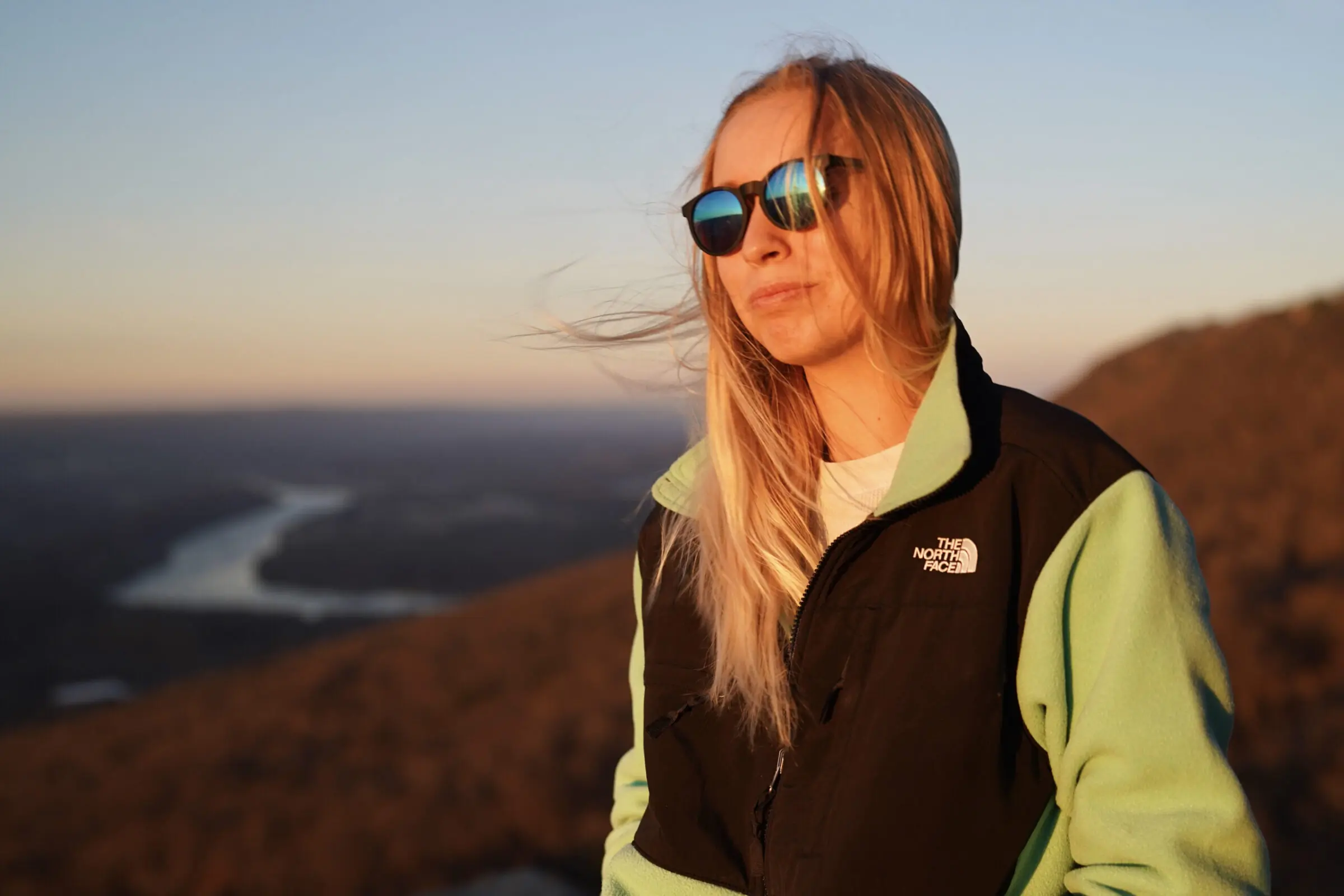
How We Tested the Best Fleece Jackets
Our Expert Testers
Our crew of testers includes an AMGA-certified (American Mountain Guides Association) rock guide, sugar beet harvester, ski patrol tail guide, triple crown thru-hiker, professional wildlife photographer, avid climber, rancher, lifelong backcountry and resort skiers, and hunters. Between the lot of us, we’ve worn these cozy layers in just about every environment imaginable.
Staff author Steve Graepel, a dedicated runner, traveler, and all-around outdoor athlete, kicked this guide off in April 2021 with an initial roundup of nine jackets. Senior Editor Chris Carter took over this guide in August 2022, and obsessively combed online catalogs and bugged brands at gear shows to find the best fleece jackets.
Chris has thru-hiked the Triple Crown of long trails (the Appalachian Trail, Pacific Crest Trail, and Continental Divide Trail) and continues to pursue long-distance hiking around the world. He’s had the chance to test a range of different fleece jackets on these trails, and considers them one of the most vital elements of your layering system on both long journeys and casual weekend adventures alike.
In 2024, Ryan Kempfer and GearJunkie editor, Chris Kassar, both writers and gear testers for decades, worked on the newest edition of this guide. Chris and Ryan are both avid skiers, hikers, and outdoor enthusiasts who prefer adventuring in the cold. They’ve been keeping their fingers on the pulse of the fleece jacket market ever since to bring you the most current, deserving selection possible.




Our Testing Grounds & Process
Our team has tested, reviewed, and published fleece jacket guides for men and women for several years across all seasons. To challenge and determine the best designs, our product testers have worn these jackets across a spectrum of environments and tasks in the Rockies, including in Colorado’s Gunnison Valley and in Mammoth Lakes, Calif., some of the coldest, snowiest destinations in the U.S.
We took these jackets climbing in Yosemite, backcountry skiing in Crested Butte, hiking in the Tetons and used them every day for errands and casual dog walks in Colorado, Wyoming, California and Colorado.
For this guide, we considered the most popular, highly acclaimed, well-made, and size-inclusive fleece jackets made for a variety of activities and across a range of prices. We know the competition in the fleece market is fierce, which is why we have slotted this guide into a regular update schedule and work hard to stay on top of new trends, technologies, and models the moment they become available to the public.
Rest assured, the list you see above represents the best of the best. If you’re in the market for different types of jackets, check out our guides to the best down jackets, the best synthetic insulated jackets, and the best winter jackets.
Our Fleece Jacket Rating System
We score each fleece jacket on warmth, durability, style, and breathability to give readers a clear sense of how it performs. Warmth reflects how well the jacket traps heat in real-world conditions. Durability looks at how the fabric and construction hold up to repeated use, abrasion, and washing. Style captures fit, cut, and how versatile it feels from trail to town. Breathability measures how well the fleece moves moisture and prevents overheating during activity. The overall rating isn’t a simple average of these numbers; a jacket may excel in one category but lag in another, and our final score reflects how those strengths and weaknesses balance out in real-world use.
Buyer’s Guide: How to Choose a Fleece Jacket


Material
Most fleece jackets are completely polyester or polyester blended with fibers like nylon, elastane, or spandex. There’s a growing trend of brands using recycled nylon or polyester for all or a portion of the mix.
Some designs incorporate technical Polartec fleece fabrics that offer weather and abrasion resistance or temperature-management properties like the stretchy and sweat-wicking Power Stretch Pro textile or Polartec Alpha active insulation.
A handful of fleece jackets integrate wool fibers into the synthetic blend to bridge the qualities of both.
Fit: Comfort & Performance
There’s a lot to consider when adding a fleece to your layering system. These jackets truly shine as additional layers when temps plummet or as a cozy, warm layer while walking around camp. They work well as a ventilating barrier underneath a rain jacket and help prevent water from seeping through breathable rainshell fabrics during heavy storms.
They are wildly popular for their versatility and comfort but aren’t the best option as a sole outer layer in most cases. The jackets above that use technical fabrics are usually made with a more athletic fit, and catered toward those looking for an active-use layer.
These jackets need to be extremely breathable while moving yet offer significant warmth while static. Given their greater protection, warmth, and packability, an active insulation synthetic jacket may work better in this area.
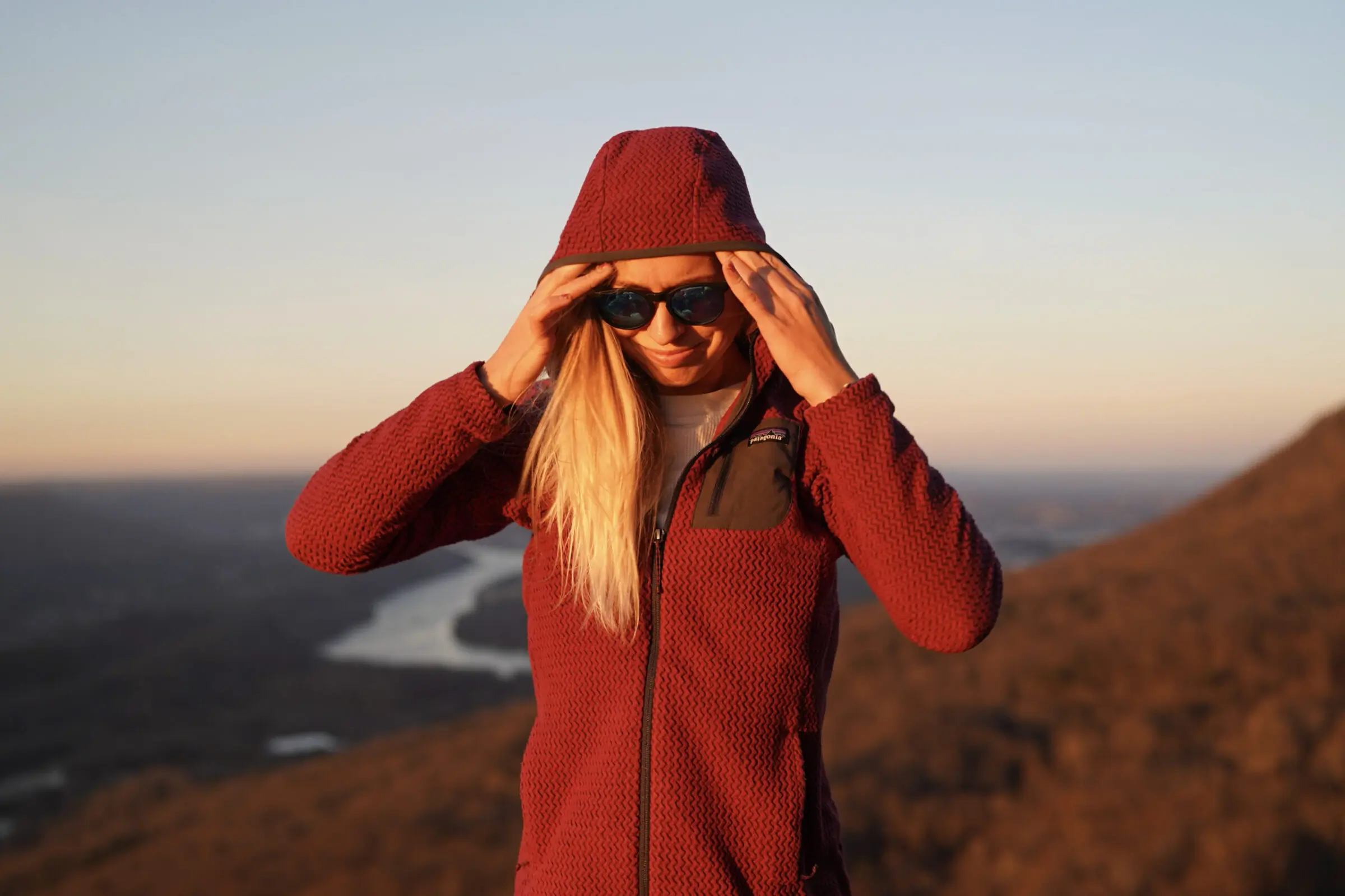



What a fleece jacket lacks in technical performance and warmth it makes up for in breathability. While many fleeces like the Cotopaxi Teca Fleece Hooded Full-Zip Jacket have a more casual, lifestyle-oriented look, some manufacturers provide form-fitting, extra-breathable fleeces that offer greater mobility and durability for high-output activities.
Jackets like the Arc’teryx Kyanite Hoodie and Patagonia R1 TechFace or Air fit this bill. Some may not be as cozy as the less athletic, comfort-oriented models, but they will regulate temperature better during intense activities like rock climbing or trail running. Before deciding what to buy, it’s important to consider how you plan on using your fleece and the ratio of comfort to performance that you want on your adventure.
Recycled Fibers
Some fleece jackets, such as the Patagonia R1 TechFace Hoodie and Fjällräven Abisko Trail Fleece Jacket, use recycled fibers like nylon and polyester. One recycled fabric, for instance, is made by Repreve, which uses post-consumer plastic water bottles to create the textile.
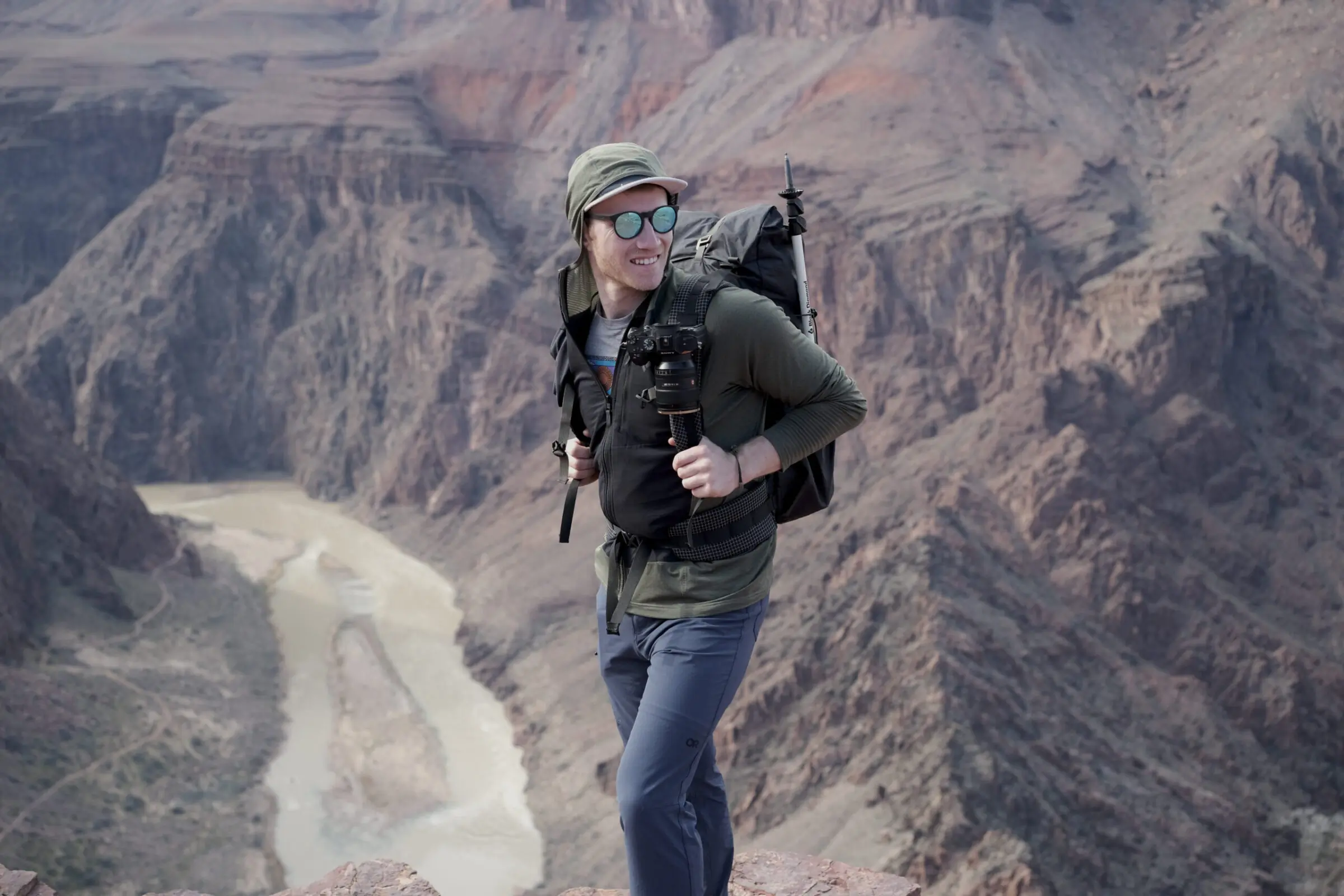



Insulation & Weight
The insulation provided by fleece jackets varies based on the material’s density, which is measured in grams per square meter (gsm). Generally, the designs are also categorized as lightweight, midweight, or heavyweight, and warmth increases with the gsm number:
- 1-150 gsm: Lightweight (warm)
- 150-250 gsm: Midweight (warmer)
- 250+ gsm: Heavyweight (warmest)
Lightweight fleece jackets (100 gsm) work well for 32-50 degrees and moderate aerobic activities. This is a good choice for extra insulation on a winter run, for instance.
Midweight fleeces (200 gsm) are thicker for 0-32 degrees and are the most versatile. This loftier option works well beneath a ski shell or while walking on an autumn evening.
Heavyweight designs (300 gsm) are created for the heart of winter and standstill activity. Without precipitation, this layer can also function as an outer layer in cold weather.
Naturally, the greater the gsm, the more the overall jacket weighs, too. You’ll need to balance your preference for overall fleece weight with the warmth properties needed for your activity.
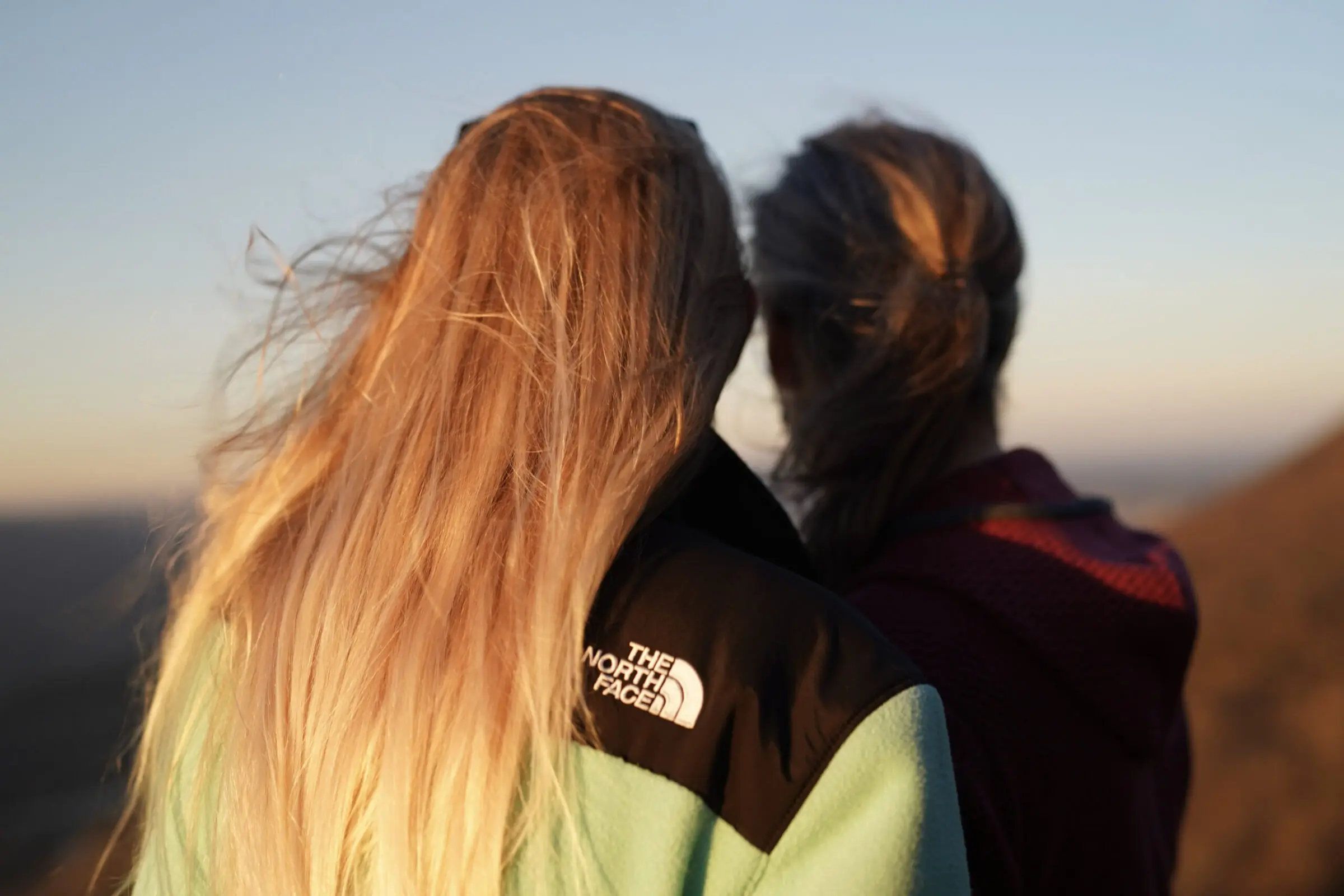



Fleece vs. Synthetic and Down Insulation
As we touched on above, fleece jackets differ from synthetic and down jackets in that they are generally more breathable but also less packable, protective, and lightweight. Down and synthetic jackets tend to be more expensive but provide a beefier barrier from the elements and have a higher warmth-to-weight ratio.
While layering a fleece with another heavier jacket is usually the move on longer adventures, if you are trying to choose one of the three as a primary jacket, there are some benefits to fleece over down and synthetic insulation. Both down and synthetic insulation need to be sandwiched between an inner and outer liner.
This fabric usually doesn’t boast the same next-to-skin comfort or breathability of a fleece jacket and can get sticky and clammy once sweat begins to build up. Also, the fabric of fleece jackets is often more durable than the thin lining material used on lightweight puffy jackets, which can make them better for technical off-trail travel.
Fleece jackets generally have better moisture-wicking abilities, and are therefore great for high-intensity activities where weight and bulk aren’t a primary issue.
Weather and Water Resistance
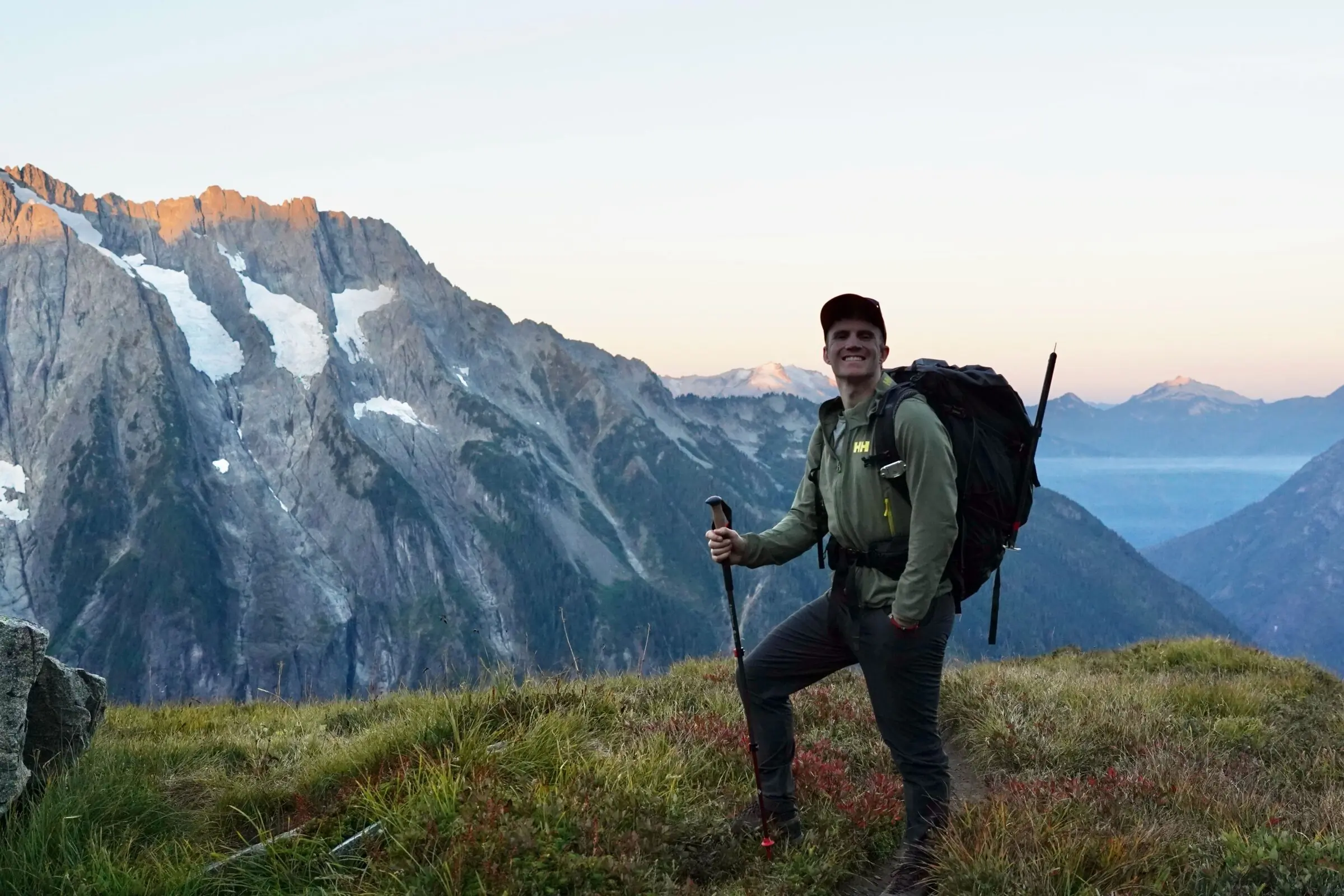



Some fleece designs are treated for weather and abrasion resistance, increasing the fabric’s durability and resilience to harsh weather like rain, wind, and snow. These types of jackets can be an especially good choice for activities like rock climbing, mountaineering, or backcountry skiing when recreationists need to move quickly and desire a layering system that works well across variable conditions.
While we don’t necessarily consider a DWR treatment an important feature for fleece jackets, some models boast hefty DWR coatings that boost both water and wind resistance. If heavy rain is in the forecast, you’ll obviously want a rain jacket or hardshell to throw over top, but jackets like these can keep you cozy and dry in a light sprinkle — and also tend to land on the more durable fringe of the spectrum.
Breathability
One of fleece’s greatest properties is that it’s inherently breathable, even when the blend includes a weather treatment. That said, if you tend to run hot and pull on a heavyweight fleece, the warmth can outweigh the breathability.
Some models are much more breathable than others. The North Face FUTUREFLEECE Full-Zip Hoodie uses eight-sided Octa yarns to achieve an awesome balance of breathability and warmth. Others, such as Patagonia’s R1 Air Full-Zip Hoody and Mountain Hardwear’s Polartec Power Grid jacket, feature a grid fleece pattern that increases moisture regulation while still trapping a significant amount of heat.
Using your fleece jacket as an element of your layering system allows you to weather much rougher conditions than if you were to wear it as a standalone piece. Pairing your fleece with a burly rain jacket or hardshell when the clouds open is a must for weathering the storm with ease. If it’s just wind you’re worried about, throw a thin windbreaker jacket over your insulator for an ultralight solution to thermal efficiency.
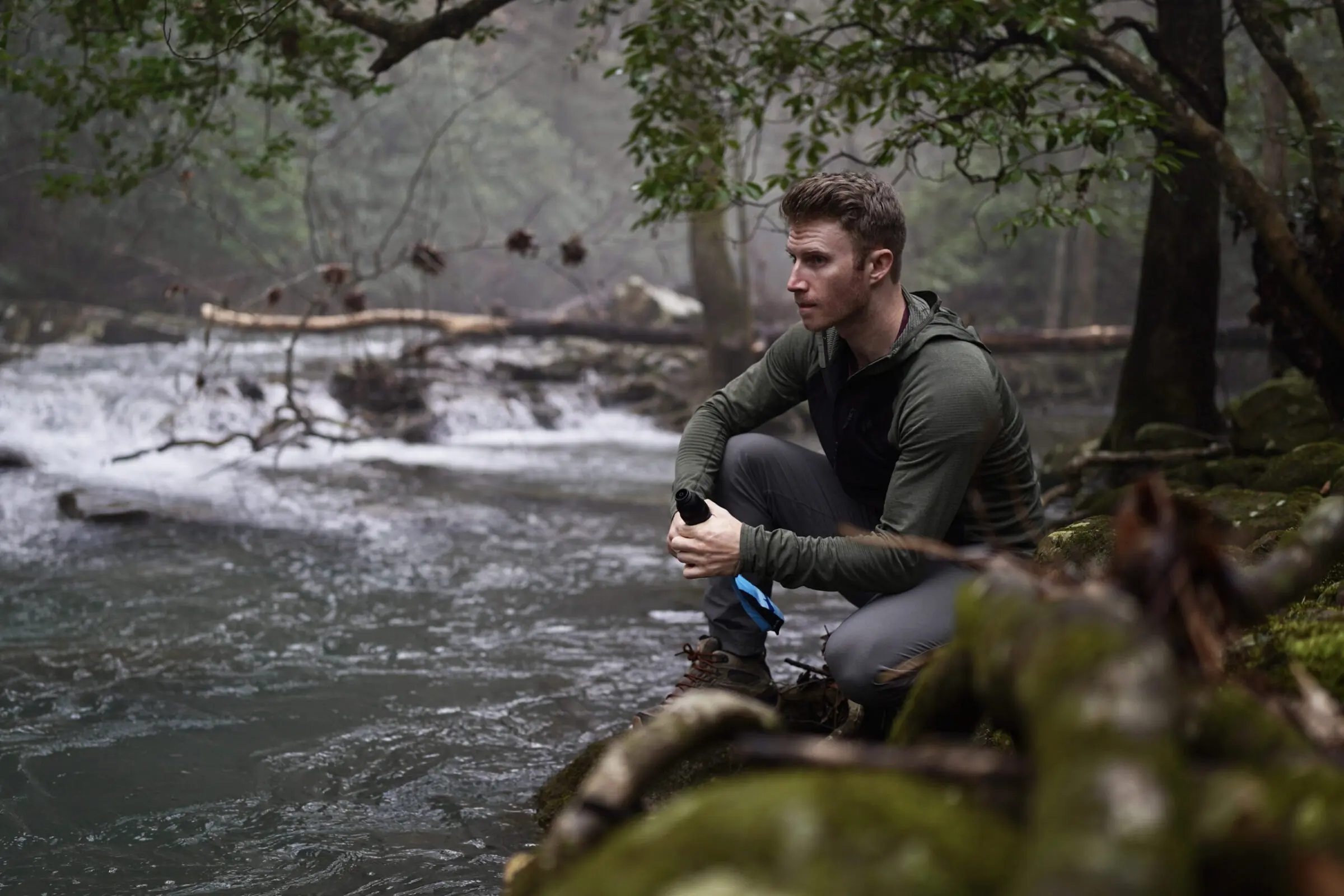



Collar & Cuffs
Many fleece designs feature a short or tall cuff that zips up to protect the chest and neck from the cold and zips down to expel heat. Some fleeces also include a hood any may be streamlined for bike, ski, or climbing helmet compatibility.
The cuffs are usually closed via a gentle elastic closure at the wrist or farther down the hand toward the base of the fingers. Some sleeves have an extended thumbhole design, like the Black Diamond Coefficient Fleece Hoody. This is popular for folks who need extra protection and warmth on their hands.
Pockets & Zippers
Fleece jackets usually have two external zippered hand pockets in the front. If you need to wear a harness for climbing, ziplining, or ski mountaineering, check that pockets are placed higher up to pair well with a harness.
Occasionally, designs have a kangaroo-style front pocket, which offers a nice place to stash a small purse or many snacks.
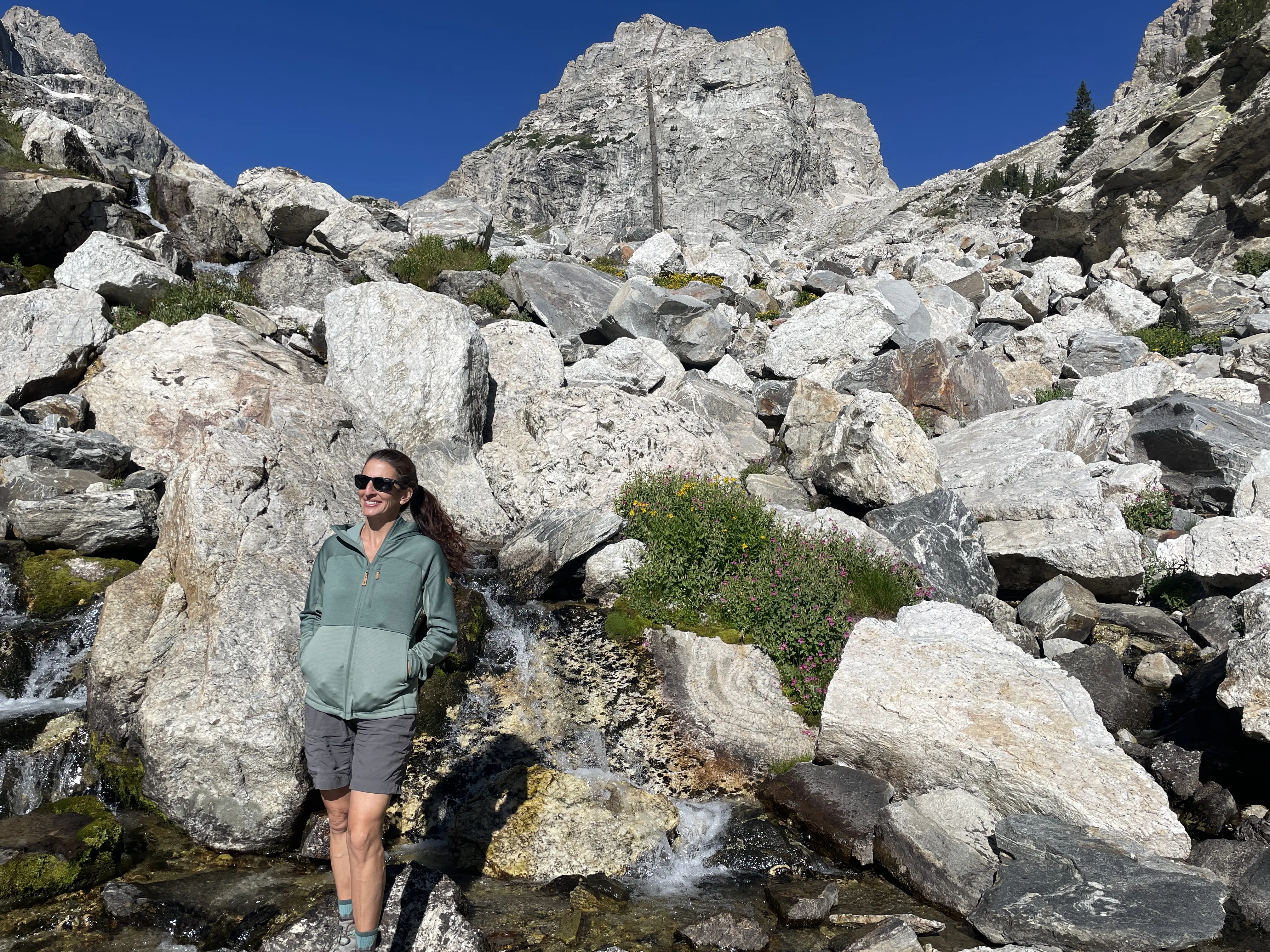



Some models include a zippered chest pocket that can be internal or external. The Fjällräven Abisko Fleece has a large chest pocket with ample room for a phone and other accessories. Occasionally, designs add a small zippered pocket on an arm. A handful, like the Cotopaxi Teca Fleece Hooded Full-Zip Jacket, have roomy internal pockets, too.
Traditionally, jackets will have a full zipper closure in front. Or, pullovers will have a partial zip or button closure from the chest to the neck. Zippers are generally seamless but vary in size and quality — YKK is the most robust.
Caring for a Fleece Jacket
Fleece jackets are built to withstand a good amount of torture on trail. But, you can take a few steps to prolong their life. Fleece jackets can be quite susceptible to pilling if cared for improperly. This can reduce the life of your jacket and its insulating properties. Wash it on gentle, using cool water, a mild detergent, and line-dry to avoid this.
Price & Value
The majority of fleece jackets range from high-end technical pieces at $200-300 to budget-friendly $50-100 fleece and everything in between. Generally, the higher the cost, the more durable, weather-resistant, and multi-functional the fleece is for a broader range of activities and conditions.
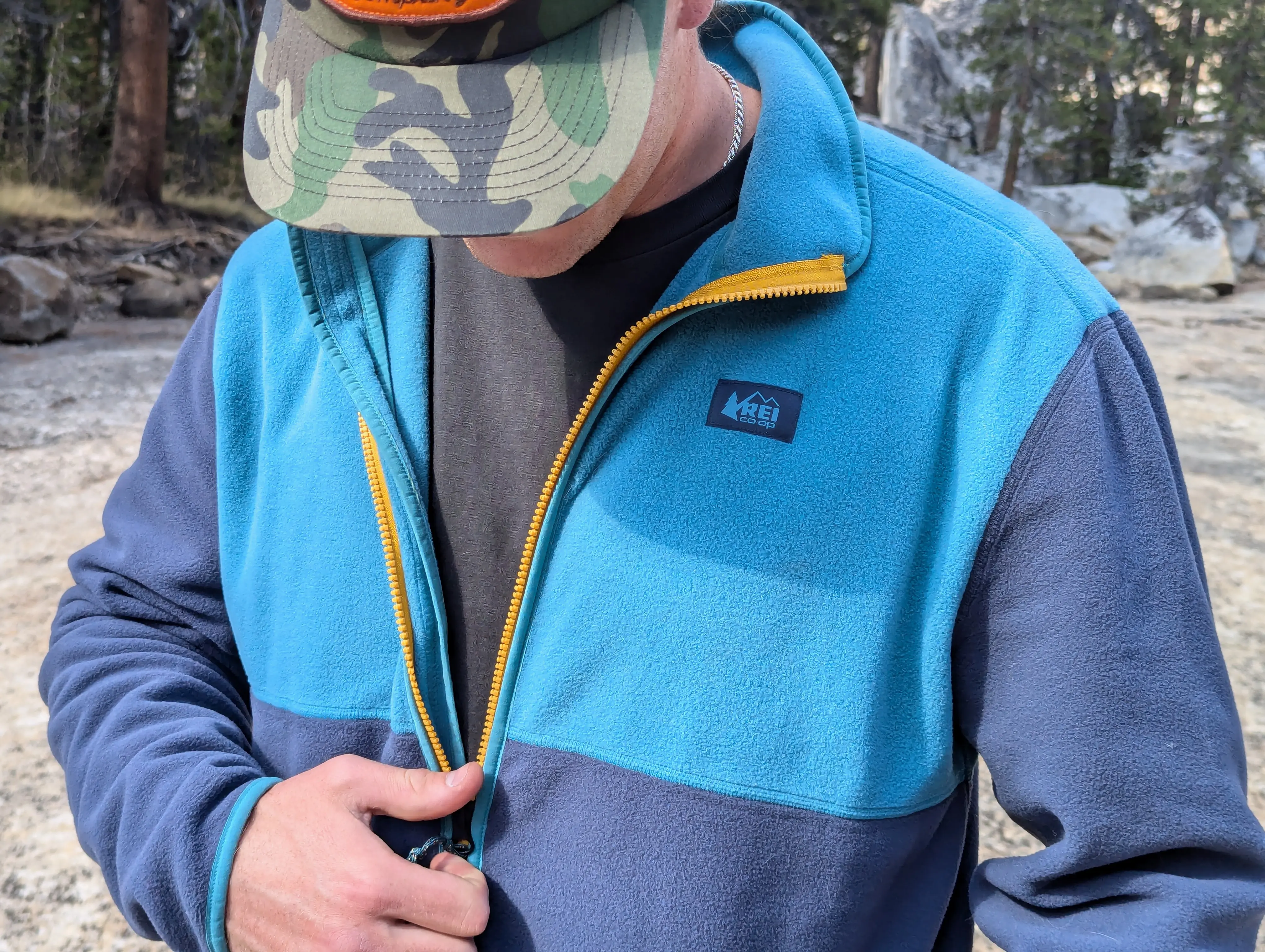



Budget
Coming in below $100, our top budget pick, the REI Co-op Trailmade Fleece Jacket, is durable, comfy, and ideal for casual use. It’s great for sitting around at a campfire or running errands on a fall morning but lacks the technical aspects and high price of other fleeces that are more suited for active endeavors.
Mid-Tier
Most fleece jackets on our list fall within the $130-190 range. Our best overall, the Patagonia R1 Air Full-Zip Hoody and most stylish option, the Cotopaxi Teca Fleece Hooded Full-Zip Jacket ($140) fall here. This category also has our favorite jacket for active pursuits, the Black Diamond Coefficient Hoody and our favorite ultralight option, The North Face FUTUREFLEECE Full-Zip Hoodie ($170). Mid-tier fleeces are designed for a variety of activities. They have a wide range of features (or lack them) and can also be very technical or not.
For example, the Patagonia Lightweight Synchilla Snap-T Fleece Pullover ($139) is better suited for errands and hanging out. The KÜHL Interceptr Full Zip Jacket (also $139) performs well on the trail. Our point here is: don’t decide by price alone. Be sure to check out all the bells and whistles, including pockets, breathability, and weight, to make sure the jacket is made for how you plan to use it.
Premium
Anything above $200 packs a price tag that may give you pause. However, these are typically extremely lightweight and technical fleeces sure to perform in all conditions. For example, the Patagonia R1 TechFace Hoody ($219), Arc’teryx Kyanite AR Hoody ($200), and the Rab Ascendor Summit Hoody ($200) are all designed to deliver mobility and warmth for more active applications.
The Rab Ascendor is breathable and has body mapping that keeps heat in where you want it and ventilation where you need it. The Pataognia R1 Techface is a favorite of serious mountain athletes due to its ability to perform in high-output activities.
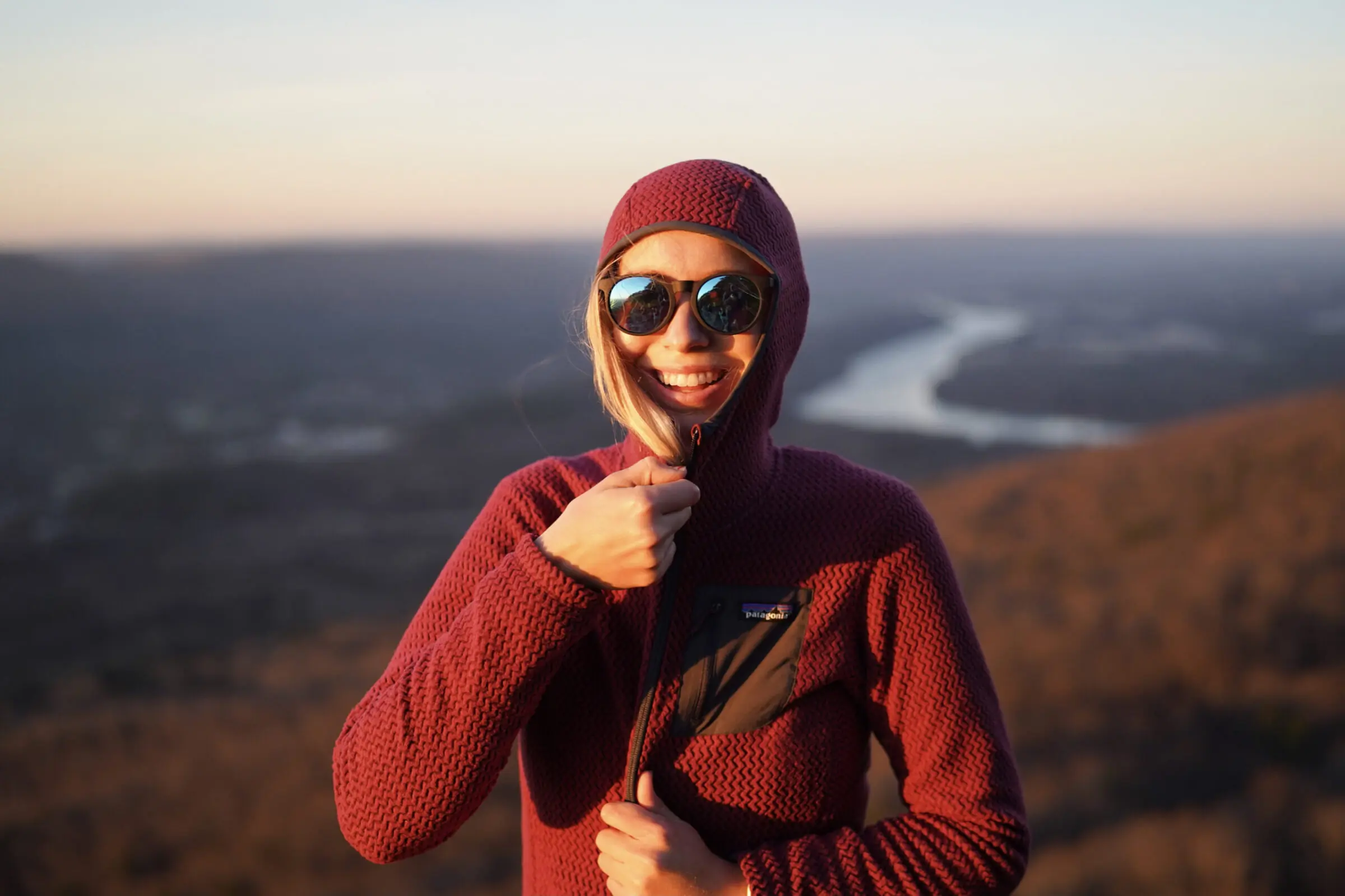



Frequently Asked Questions
Fleece is an insulating midlayer or lightweight outer jacket created from synthetic materials, typically polyester or a polyester blend. The human-made fabric is soft, breathable, and quick-drying, and it imitates wool fleece. Often, fleece jackets are long-sleeved with a full or partial front zipper. The material needs an additional treatment in order to be wind- or water-resistant.
Fleece is not to be confused with wool fleece, a natural fiber used to create apparel. This can come from a variety of animals including sheep, lamb, alpaca, and goat.
The first-ever synthetic fleece textile was developed by Malden Mills Industries, which is now known as Polartec, in 1981. Using the fabric, Patagonia collaborated with the company to develop the Synchilla Fleece pullover in 1985. Today, many companies in addition to Polartec produce fleece fabric.
Fleece tends to hold smells, especially compared to wool, which is naturally odor-resistant. Pile fleece designs, which are fluffier and super cozy, can be bulky. Also, fleece doesn’t inherently block wind, rain, or snow — other outer layers are much better choices for weather protection.
When fleece does get wet, it doesn’t insulate well. The fabric tends to pill or clump over time. The fabric can also generate static electricity, which attracts and holds hair. Also, be careful around a fireplace, furnace, or campfire — untreated fleece can melt at low temperatures.
In a word, yes, fleece is better than cotton — if we’re talking about managing precipitation, turbulent weather conditions, perspiration, and overall safety during outdoor activity.
Though some folks enjoy the touch of cotton, fleece is a hydrophobic fiber that repels water and dries relatively quickly. Cotton absorbs moisture, doesn’t dry quickly, and can chafe when wet.
Recreationists should avoid fabric that holds sweat and stays damp, which can potentially increase the risk of hypothermia and discomfort.
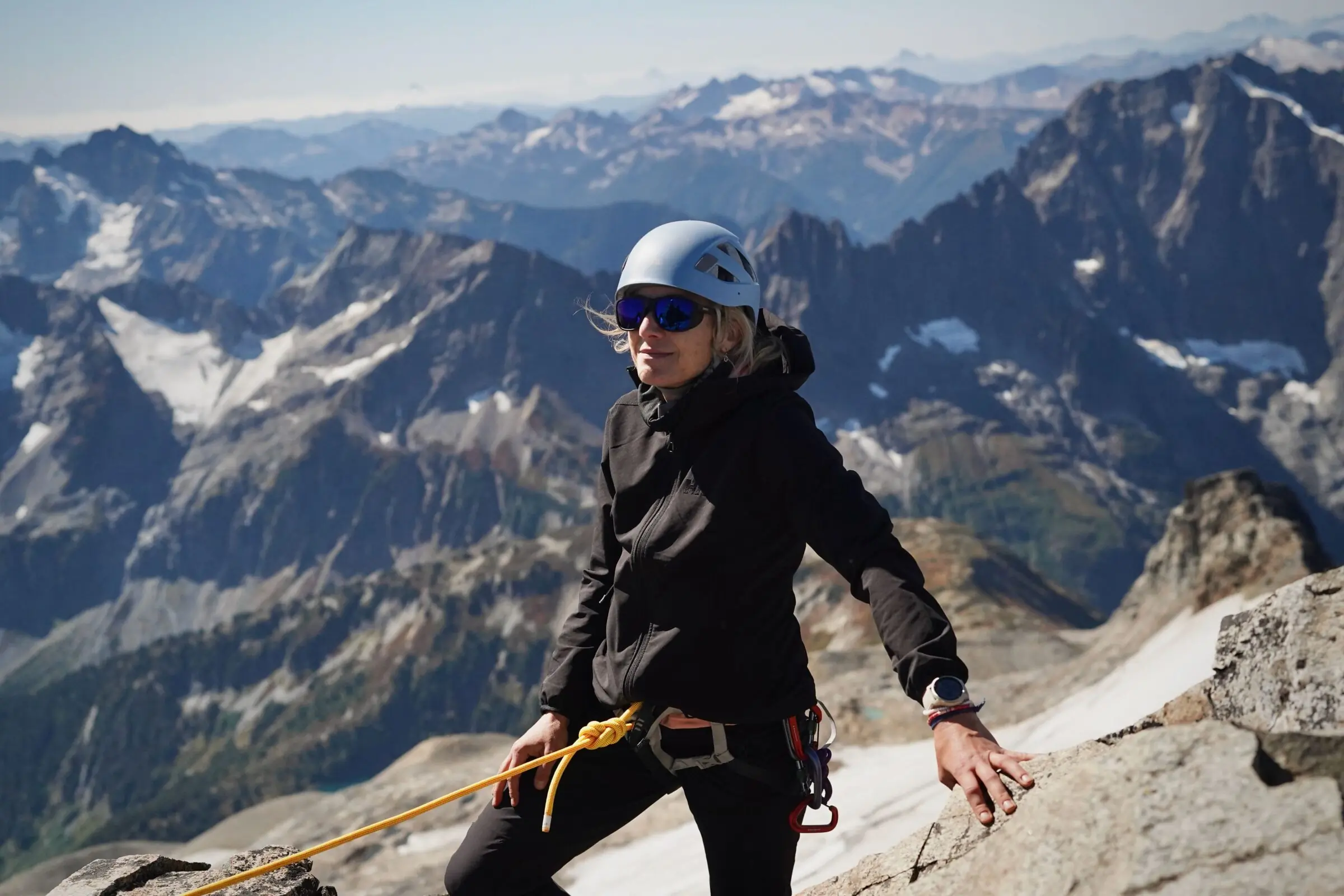



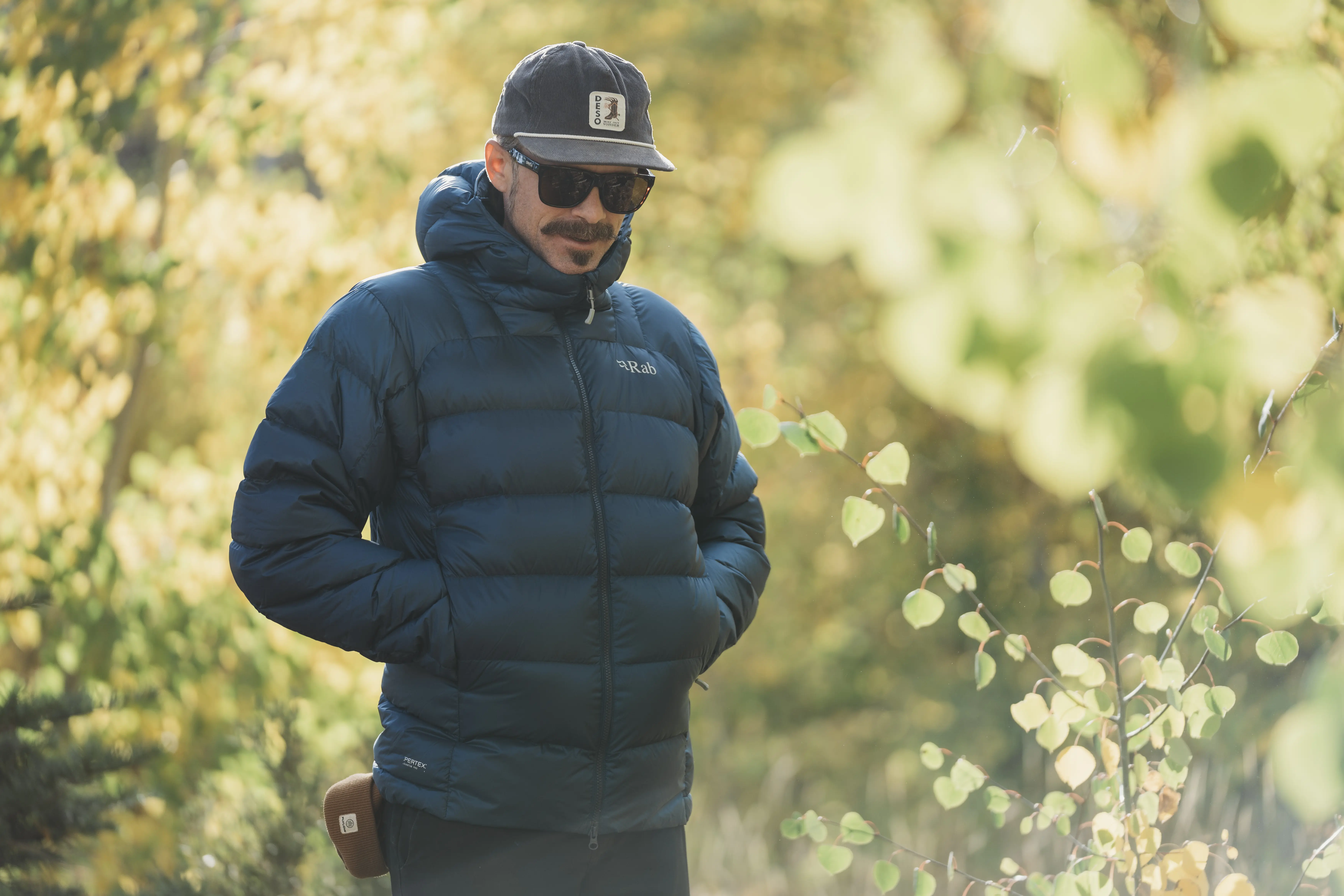

The Best Down Jackets of 2025
We tested the best down jackets from Arc’teryx, Patagonia, Mountain Hardwear, and more to help you find the right jacket for your needs and budget.


The Best Fleece Jackets for Women of 2025-2026
From skiing to cold-weather runs, here are our favorite women’s fleece jackets. Top picks include Patagonia, Arc’teryx, REI, The North Face, and more.

